|
|
Post by Entendance on Apr 11, 2015 9:12:40 GMT -5


E. on twitter E. on Brighteon.Social E. on gab
***Where to store your Gold & Silver Bars
***Gold and Silver
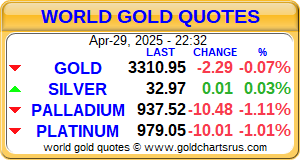 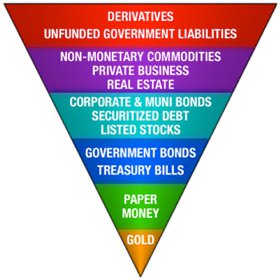

Money Economy Markets

"...So NOW you should understand WHY out of control government hates gold. It’s because a rising gold price exposes government fraud and corruption for all to see..."
Investors without the humility to admit mistakes are not going to last long. On the other hand, good investors who are willing to analyze their mistakes and be frank about what environments will and will not favor their strategies have the chance to transcend and become great. 
Remember: "There is only one corner of the universe you can be certain of improving, and that's your own self.”― Aldous Huxley

   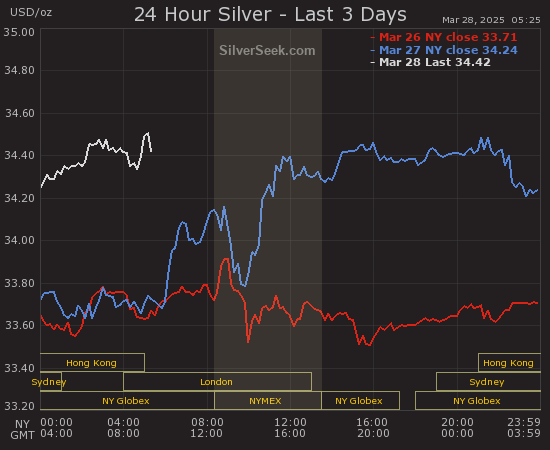  
Successful investing is more about avoiding mistakes than anything else. The real leverage in the long game of investing is us—through our decisions. We have all the power and we have all the leverage. We know this conclusively in a negative way from the numerous studies on investor behavior showing how bad choices over time leverage themselves into consistently poor long-term returns.
If investors’ consistently bad choices are penalizing their long-term results, that means that consistently good choices will enhance them. So there must be something specific and persistent that is keeping investors from making what, at the end of the day, are simple and common sense choices. -Marshall Jaffe  More here More here
If you like this beach, then you can help your friends locate it by letting them know about Fred & EntendanceInvestors Beach.
Let's all make this place a thriving sheltered Club for excellence, education and information! Sollte dir dieser Strand gefallen, dann kannst du deinen Freunden behilflich sein, indem du sie über Fred & EntendanceInvestors Beach informierst. Lasst uns gemeinsam diesen Ort zu einen blühenden Club für Vortrefflichkeit, Bildung und Information machen! 
Fred & EntendanceInvestors Beach advice to buyers of physical precious metals is the same as always: if you purchased it and you can't hold it in your hand, it isn't yours.
|
|
|
|
Post by Entendance on Apr 13, 2015 10:40:02 GMT -5
2018: Investing & Trading
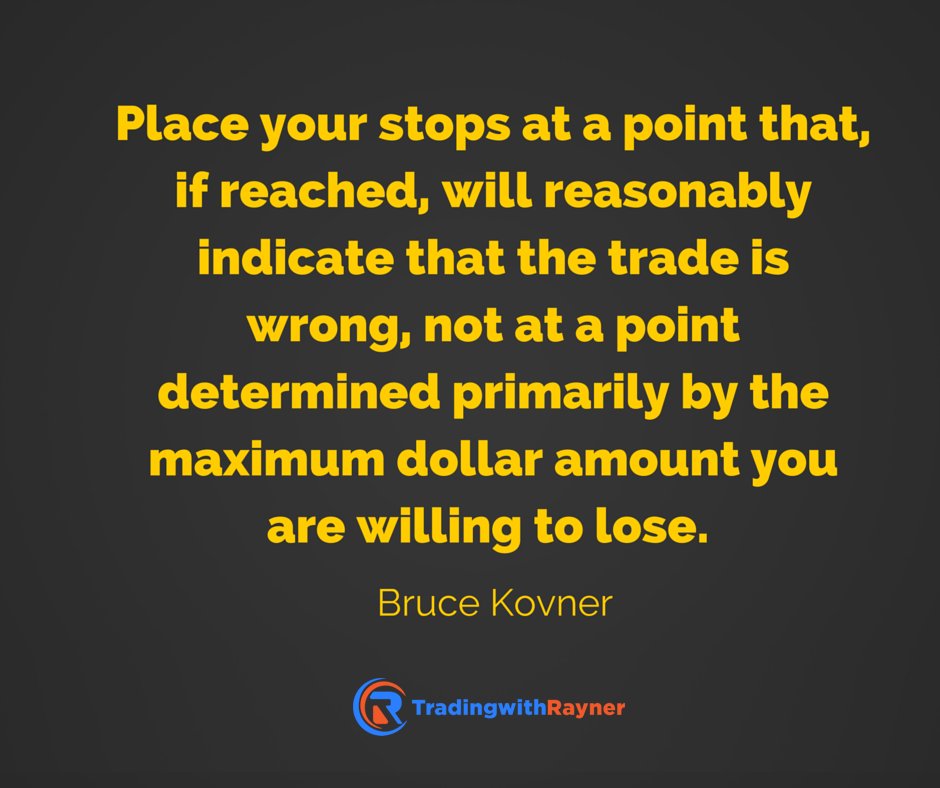
Your stops should be at a location where your initial trading idea is invalidated.
Trading without trailing stops is the ego wanting to never be held accountable (to admit that a position was a mistake) if a certain level is breached or if a certain set of circumstances play out in an unexpected manner.
Anybody who doesn't use trailing stops is going to be out of business at some point. It's not if, it's when. -Entendance
The placement of stops and limits is a critical component to successful trading. Stops are put on a trade to take a trader out of a trade at a predetermined point at a worse price than the current price. Think of them as a safety net that will prevent you from losing more money on this trade. Stops are often set based on a certain percentage of loss relative to the size of the trader’s account, or based levels of support and resistance. These are two of the more widely used criteria. Whatever method is chosen, it is imperative to have a protective stop in place on each and every trade that is placed. Without them, a trader leaves themselves open to potentially catastrophic losses. 
Jonathan Hoenig: "Trailing, trailing, trailing! Stops, stops, stops!" (THE ULTIMATE STOP-LOSS order is zero.)
<For many pundits, investment tips exist in a fantasy world with no capital constraints, margin limits or time horizons. Because pundits focus on stocks picks, and not portfolio management, most of their work centers on where to put new money rather than how to deal with existing positions. So while in a perfect world we'd always have a clean slate to work with, in the real world most of us travel with baggage. And in your portfolio, that boils down to existing positions. That's always the starting point for smart financial decisions. More than anything else, your existing positions should influence how you invest. Since it's always preferable to maximize an existing position rather than open a new one, I suggest looking at what's already happening within a portfolio instead of focusing on what might happen in the market.
The best way to begin evaluating a position is to determine whether you own it as a gain or a loss. But use caution: It's at this initial step that many investors' discipline goes horribly awry. Why? Because people tend to get rid of stocks that have made money, yet hold on to shares that have gone down the drain.
The hardest thing about trading is often sitting on your hands. To that end, often the best way to maximize a winning position is to let it be. No covered-call writing. No fancy intraday swing trading. No shorting-against-the-box option strategies. When you have a winning position, just try your darndest to stay out of its way. The market doesn't know where you bought it, and although nothing feels as good a taking a profit, you can't maximize your winning trades if you're always nipping them in the bud.
Even if a winning position has grown so large that a portfolio's diversification is compromised, I still don't advocate arbitrary selling. So if you have a big winner on your hands, don't just toss it out. To maximize the position, use stop-loss orders underneath the current price of the stock, and let the market, not your judgment, guide your sales. This deters a single ill-timed trade from limiting profits. And no matter what, don't sell a share more than necessary. With winning trades, we maximize our positions by trying to stay in them.
Losing trades, however, aren't generally given the benefit of the doubt. The truth is, when it comes to portfolio management, if you worry about the losses, the profits take care of themselves. I spend most of my time looking at stocks in my portfolio that have declined and figuring out the best way to make the best of an admittedly bad situation. Not every stock is a winner. And one of the most productive ways to maximize a losing position is to learn from it. You lost money on XYZ. Fine. But as we often suggest, what often hangs traders isn't the market — it's their own poor technique.
So as painful as it might be, analyze the trade and try to understand just what went wrong. Were you trading too big? Did you get stupid and double-down? Was XYZ part of a well-thought-out strategy or just a poorly planned lottery ticket? Dealing with losses hurts — and it should. The more you dislike that pain, the better you'll be at avoiding it.
Another way to maximize a losing position is to analyze it within the context of the current market environment, perhaps making a case for keeping it. As we often like to point out, trading is first and foremost an exercise in observation. So contrast what's going on in your portfolio to what's currently happening in the market. If an old position (or group to which that position belongs) is showing new life, I'm more likely to hold the loss or tax-swap it into a similar type of security, trying to turn lemons into lemonade. Instead of always looking for new positions, it's always more advantageous to try and maximize the ones you already have. And finally, because losing trades do tend to stay losing trades, the best way to maximize an underwater position is to set a plan for getting out of it. Big losses start out as small ones, and no matter how good the story is, the sure method of handling a losing trade is to throw in the towel. The art lies in the technique. So instead of just arbitrarily selling losers, I try and maximize my position and "trade out of them." This is accomplished by setting stop-loss levels below the current market price at which you will sell a portion, if not all, of your losing position.
Even though I've ridden XYZ from $50 to $45, I won't necessarily dump the stock at $45. What I will do, however, is to set an exit strategy by establishing stop-loss orders to sell somewhere in the $44, $43 or $42 region. And while we're always fearful of "selling the low" and missing out on the big rebound, I'd rather get stopped-out than hold vigil over a losing position that might go nowhere for years. The point is that you liked it at $50, not $45. If XYZ ever gets back up there, then you can always buy it back.
The reason to use stop-loss orders below the current market price is that while losing positions tend to stay losing positions, the fact is we never really know for sure. A stop-loss order gives the stock a small amount of wiggle room in which it can potentially show some strength. As we've discussed before, as the stock moves higher, so should your stops. Should the stock continue to decline, you've already limited your risk, and because the order is placed in advance of the price being traded, you're first in line to get out.
Because the market is always unknown, even the best traders can't always predict what's going to happen. And because we're not just trading stocks, but rather positions within a portfolio, the trick isn't always to find winning names, it's to maximize the ones we've already got. By taking a skillful approach to both the winners and the losers, profitable trades are preserved to grow, while the inevitable losers are cut off, or at the very least, controlled.
Regardless of whether you take a fundamental or technical approach, stop-loss orders should be an integral part of every trading discipline. They succeed simply by design: By placing one, you're quietly acknowledging that, yes, even great stock picks can end up as lousy trades.
Stop-loss trades are the bedrock of disciplined trading. Yet the most common problem with stop-loss orders is that they never get executed. Instead of actually placing orders, most folks use "mental stops," expecting that once a certain price is hit they'll be available (and able) to make the trade. Few ever are, making mental stops about as useful to a portfolio as mental sit-ups are to abs.
So even with XYZ down 25% from the purchase price, hitting low after low far below where a stop should've been placed, many traders will hang on, naively certain that a bottom and rally aren't far off. Is it denial? Is it delusion? Either way it's expensive to your bottom line.
Once you've committed to trading with stops, the next challenge comes in knowing just where to place them. Some people opt for a technical signal, like placing stop orders at a security's 100-day moving average. Some use a mathematical approach, selling stocks if they decline 15% from the purchase price or a recent intraday high. Regardless of the approach, the most frequent grievance I hear is from people who complain that their stops always get hit, only to have the market reverse and continue higher.
The real purpose of a stop order isn't to save a few dollars, but to ensure that you move on from a trade when a market's trend has legitimately changed. And yes, when you place a stop order a mere 3% below the current market price, it will get hit. So because most stocks, just like a rodeo bull, will try and toss you off before moving higher, it's much preferable to trade a smaller position with a wider stop rather than a larger position with a tighter stop. A final thought on stops: Although there's no concrete data available, trader superstition suggests that you never place stops at "obvious" prices such as $10.00, $25.50 or other round, commonplace numbers that are likely to appeal to the herd. The rationale? The public is lazy, so when Ma or Pa Kettle establishes a stop, you can bet it's at $30.00, not $29.87. Because markets tend to cluster and churn where the herd's stops rest, I try to pick slightly more unusual prices to avoid getting tangled up in the public's clumsy tracks.>
Stocks: The Psychology of Stop Loss Levels In Praise of the Simple Stop Loss Trading Psychology and the Risk of Ruin How to Use Trading Stop-Loss Orders Day Traders – How and Why to Use a Daily Stop Loss Forex: How To Exit Forex Trades Properly How to Set Stops Can you explain Trailing Stops? Why a Stop Needs to be in Place on Every Trade
Hidden, trailed or stop on quote or even stop limit on quote orders for certain securities like OTC Bulletin Board stocks or penny stocks can't be accepted. Any broker will not allow for stop-loss orders. E.
Eric Scott Hunsader: Retail Stop Orders - how they really work 

Short Selling: A Trader's Guide
When the herd go towards the water, never stand between the beasts and the river. Entendance
|
|
|
|
Post by Entendance on Apr 14, 2015 10:25:14 GMT -5
|
|
|
|
Post by Entendance on Apr 15, 2015 17:28:19 GMT -5
Psychopathic Times (Narcissist Nation) The Entendance Beach mentioned & inserted here  
Inquiring minds only:***Transactional Analysis***
(Mi piace dedicare questo messaggio riguardante l'analisi transazionale e i prossimi messaggi sulla psicosintesi e sulla psicocibernetica al mio grande amico e maestro Giuseppe Cipollina Mangiameli

Io già dal 1977 avrei dovuto iniziare ad esercitare la psicoterapia grazie alla sua guida. Invece ho intrapreso la mia attività professionale nel settore finanziario internazionale, gestendo prima capitali, poi uomini e capitali e finendo come consulente personale di esseri umani che decidono sulle vite degli altri. Ringrazio quindi ogni giorno il Signore per aver donato a me e tutti Giuseppe C.M., Eric Berne, Thomas Anthony Harris, Roberto Assagioli, Maxwell Maltz   Libri da evitare: Libri da evitare:
L’ATTO DI VOLONTA’ - Roberto Assagioli, Astrolabio
TE STESSO AL CENTO PER CENTO - Wayne W. Dyer, Rizzoli
A CHE GIOCO GIOCHIAMO - Eric Berne, Bompiani
IO SONO OK TU SEI OK - Thomas A. Harris, Supersaggi Rizzoli
COME OTTENERE IL MEGLIO DA SE’ E DAGLI ALTRI - Anthony Robbins, Bompiani
PSICOCIBERNETICA - Maxwell Maltz, Astrolabio
COME TRATTARE GLI ALTRI E FARSELI AMICI -Dale Carnegie, Bompiani
Ad maiorem Dei gloriam. -Entendance)


In the 50 years since the first publication of Eric Berne’s “Games People Play,” and the formation of the International Transactional Analysis Association (ITAA), the transactional analysis community has grown from a small gathering in San Francisco to a global community.
γνῶθι σεαυτόν (know thyself)...keep your Adult Ego State
|
|
|
|
Post by Entendance on Apr 18, 2015 4:32:28 GMT -5
 Always ask yourself the question “what is the one thing I can do today that will make everything else easier or unnecessary”. Focus on that one thing. If you don’t know what that one thing is, then your one thing is to find out. Always ask yourself the question “what is the one thing I can do today that will make everything else easier or unnecessary”. Focus on that one thing. If you don’t know what that one thing is, then your one thing is to find out.
Don’t focus on being busy; focus on being productive. Allow what matters most to drive your day.
If you chase two rabbits, you will not catch either one. More here here & here
Gutta cavat lapidem; non vi, sed saepe cadendo. -Publius Ovidius Naso (A water drop hollows a stone not by force, but by falling often)
Libri muti magistri (Books are silent teachers)
 Mental and spiritual preparation I Mental and spiritual preparation I
Psychosynthesis
The Italian psychiatrist Roberto Assagioli began Psychosynthesis in 1910. Seeing the need to expand beyond Freud’s analysis and “talking cure”, he added synthesis and a broader use of our human abilities, such as will, imagination, and intuition. He included even our spiritual side, our higher aspirations, and our center, which he called the Self. People use Psychosynthesis as a way of life – and in a wide variety of fields, such as education, psychology, business, and spirituality. Whether student or sage, we all can enhance our development, live a more centered life, have freer use of will, and enjoy a greater sense of mutual responsibility and caring. Psychosynthesis offersl tools for many purposes: embracing opposed parts of our inner worlds, enriching each other with our differences, making groups and organizations function with greater purpose, and enjoying a respectful interchange with the world that envelops us. The main goal of the broad-ranging theory and methods of Psychosynthesis is to enhance the full range of human experience and support our movement toward Self-realization.
Roberto Assagioli was one of the masters of modern psychology in the line that runs from Sigmund Freud through C. G. Jung and Abraham Maslow. Himself a colleague of all these men, Assagioli was among the pioneers of psychoanalysis in Italy, though he pointed out that Freud had largely neglected the higher reaches of human nature. Over many years until his death in 1974 Dr. Assagioli developed a comprehensive psychology known as psychosynthesis. Psycho-synthesis sees man as tending naturally toward harmony within himself and with the world. Dr.Assagioli's concept of the will is a key part of that vision.
Roberto Assagioli: The Act Of Will
 Here You Go The Complete Book Here You Go The Complete Book Excerpts from The Act Of Will:
Introduction
If a man from a previous civilization—an ancient Greek, let us say, or a Roman— suddenly appeared among present-day humanity, his first impressions would probably lead him to regard it as a race of magicians and demigods. But were he a Plato or a Marcus Aurelius and refused to be dazzled by the material wonders created by advanced technology, and were he to examine the human condition more carefully, his first impressions would give place to great dismay.
He would soon notice that, though man has acquired an impressive degree of power over nature, his knowledge of and control over his inner being is very limited. He would perceive that this modern "magician," capable of descending to the bottom of the ocean and projecting himself to the moon, is largely ignorant of what is going on in the depths of his unconscious and is unable to reach up to the luminous superconscious levels, and to become aware of his true Self.
This supposed demigod, control ling great electrical forces with a movement of the finger and flooding the air with sound and pictures for the entertainment of millions, would be seen to be incapable of dealing with his own emotions, impulses, and desires.
As several writers, Toynbee among them, have pointed out, this wide gulf between man's external and inner powers is one of the most important and profound causes of the individual and collective evils which afflict our civilization and gravely menace its future. Man has had to pay dearly for his material achievements. His life has become richer, broader, and more stimulating, but at the same time more complicated and exhausting. Its rapidly increasing tempo, the opportunities it offers for gratifying his desires, and the intricate economic and social machinery in which it has enmeshed him make ever more insistent demands on his energy, his mental functions, his emotions, and his will. For convincing evidence of this it would suffice to observe the day of the average businessman or politician, or career woman or housewife.
The individual often lacks the resources to cope with the difficulties and pitfalls of this kind of existence. His resistance may crumble in the face of the demands, the confusions, and the enticements it imposes. The ensuing disturbance leads to increasing discouragement and frustration—even to desperation.
The remedy for these evils—the narrowing and eventual closing of the fatal gap between man's external and his inner powers—has been and should be sought in two directions:
the simplification of his outer life and the development of his inner powers. Let us examine in what ways and to what extent these two procedures can provide the needed remedies...
...I shall use three categories—or dimensions—in describing the will: aspects, qualities, and stages. The first category, aspects, is the most basic, and represents the facets that can be recognized in the fully developed will. The second category, qualities, refers to the expression of the will: these are the modes of expression of the will-in-action. Finally, the stages of the will refer specifically to the process of willing, the act of will as it unfolds from beginning to end.
The fully developed will can be thought of as having a number of different major aspects; these should be thought of as the principal facets of our main subject, the major elements in the outline of the will. Each of these aspects can be trained in specific and appropriate ways. Because the bulk of Part One of this volume is concerned with these major aspects, it is well to outline them at once. The aspects of the fully developed human will are the strong will, the skillful will, the good will, and the Transpersonal Will…
...Before we embark on a detailed examination of the four major aspects of the will and how they can be developed by training, it will be useful to review the qualities of the will. If we study the phenomenology of the will-in-action, that is, the characteristics displayed by willers, we find a number of qualities which are outstanding in the great willers, and which exist also in some measure, however small, in each of us and, if necessary, can be aroused from latency manifestation. These qualities are likely to be more familiar to most readers than the aspects.
The qualities of the will are:
1. Energy—Dynamic Power—Intensity
2. Mastery—Control—Discipline
3. Concentration—One-Pointedness—Attention— Focus
4. Determination—Decisiveness—Resoluteness— Promptness
5. Persistence—Endurance—Patience
6. Initiative—Courage—Daring
7. Organization—Integration—Synthesis
QUALITA’ DELLA VOLONTA’:
1. ENERGIA - DINAMISMO - INTENSITA’
2 . DOMINIO - CONTROLLO - DISCIPLINA
3 . CONCENTRAZIONE - CONVERGENZA - ATTENZIONE - FOCALIZZAZIONE
4 . DETERMINAZIONE - DECISIONE - RISOLUTEZZA - PRONTEZZA
5 . PERSEVERANZA - SOPPORTAZIONE - PAZIENZA
6 . INIZIATIVA - CORAGGIO - AUDACIA
7. ORGANIZZAZIONE - INTEGRAZIONE - SINTESI
ASPETTI DELLA VOLONTA’:
VOLONTA’ FORTE
VOLONTA’ SAPIENTE
VOLONTA’ BUONA
VOLONTA’ TRANSPERSONALE
Roberto Assagioli “ L’atto di volontà ” ed. Astrolabio 1977
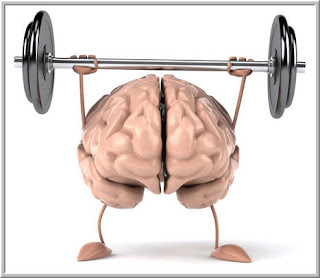
...Exercises for strenghtening the will... the complete book
Free Psychosynthesis download
The U.S.A. Association for the Advancement of Psychosynthesis
The U.S.A. Synthesis Center
Roberto Assagioli - His Life and Work
The Act of Will ROBERTO ASSAGIOLI, M.D APPENDIX ONE
SELF-IDENTIFICATION EXERCISE
DISIDENTIFICATION AND SELF-IDENTIFICATION
We are dominated by everything with which our self becomes identified. We can dominate, direct, and utilize everything from which we disidentify ourselves.
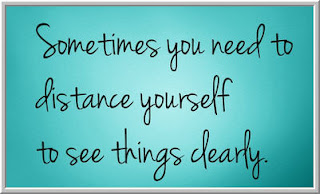
The central, fundamental experience of self-consciousness, the discovery of the"I," is implicit in our human consciousness.* It is that which distinguishes our consciousness from that of the animals, which are conscious but not self-conscious. But generally this self-consciousness is indeed "implicit" rather than explicit. It is experienced in a nebulous and distorted way because it is usuallymixed with and veiled by the
contents of consciousness.This constant input of influences veils the clarity of consciousness and produces,spurious identifications of the self with the content of consciousness, rather than with consciousness * "Self-consciousness" is used here in the purely psychological sense of being aware of oneself as a distinct individual and not in the customary sense of egocentric and even neurotic "self-centeredness" itself.
If we are to make self-consciousness explicit, clear, and vivid, we must first disidentify ourselves from the contents of our consciousness. More specifically, the habitual state for most of us is to be identified with that which seems, at any one time, to give us the greatest sense of aliveness, which seems to us to be most real, or most intense.This identification with a part of ourselves is usually related to the predominant function or focus of our awareness, to the predominant role we play in life. It cantake many forms. Some people are identified with their bodies. They experience themselves, and often talk about themselves, mainly in terms of sensation; in other words they function as if they
were their bodies. Others are identified with their feelings; they experience and describe their state of being in affective terms, and believe their feelings to be the central and most intimate part of themselves, while thoughts and sensations are perceived as more distant, perhaps somewhat separate. Those who are identified with their minds are likely to describe themselves withintellectual constructs, even when asked how they feel. They often consider feelings and sensations as peripheral, or are largely unaware of them. Many areidentified with a role, and live, function, and experience themselves in terms of that role, such as "mother," "husband," "wife," "student," "businessman,""teacher," etc.This identification with only a part of our personality may be temporarily satisfactory, but it has serious drawbacks. It prevents us from realizing the experience of the "I," the deep sense of self-identification, of knowing who we are. It excludes, or greatly decreases, the ability to identify with all the other parts of our personality, to enjoy them and utilize them to their full extent. Thus our "normal" expression in the world is limited at any one time to only a fraction of what it can be. The conscious—or even unconscious—realization that wesomehow do not have access to much that is in us can cause frustration and painful feelings of inadequacy and failure. Finally, a continuing identification with either a role or a predominant function leads often, and almost inevitably, to a precarious life situation resulting sooner or later in a sense of loss, even despair, such as in the case of an athlete who grows old and loses his physical strength; an actress whose physical beauty is fading; amother whose children have grown up and left her; or a student who has to leave school and face a new set of responsibilities. Such situations can produce serious and often very painful crises. They can be considered as more or less partial psychological "deaths." No frantic clinging to the waning old "identity" can avail.The true solution can be only a "rebirth," that is, entering into a new and broader identification. This sometimes involves the whole personality and requires andleads to an awakening or "birth" into a new and higher state of being.
The process of death and rebirth was symbolically enacted in various mystery rites and has been lived and described in religious terms by many mystics. At present it is being rediscovered in terms of transpersonal experiences and realizations.This process often occurs without a clear understanding of its meaning and often against the wish and will of the individual involved in it. But a conscious, purposeful, willing cooperation can greatly facilitate, foster, and hasten it.It can be best done by a deliberate exercise of disidentification and self-identification.
Through it we gain the freedom and the power of choice to be identified with, or disidentified from, any aspect of our personality, according to what seems to us most appropriate in each situation. Thus we can learn to master,direct, and utilize all the elements and aspects of our personality, in an inclusive and hannonious synthesis. Therefore this exercise is considered as basic in psychosynthesis
The Act of Will ROBERTO ASSAGIOLI, M.D. Chapter 5 ***THE SKILLFUL WILL: PSYCHOLOGICAL LAWS
Personal notes: since 1981 I've been reading, studying, copying again, summarizing over and over this book and practicing its excercises 2/3 times any given year. From 1983 to 2002 I have showed & teached Psychosyntesis and Assagioli's Act Of Will to many First Class Ceos and managers under my guidance. The Act of Will is the most influential and important book to me. I urge you to take your own-time just on the path of being Man/Woman for Others: read meditate and apply the Act of Will and Psychosyntesis.

|
|
|
|
Post by Entendance on Apr 26, 2015 6:46:23 GMT -5

Πάντα χωρεῖ καὶ οὐδὲν μένει καὶ δὶς ἐς τὸν αὐτὸν ποταμὸν οὐκ ἂν ἐμβαίης. -Ἡράκλειτος ὁ Ἐφέσιος
Everything changes and nothing remains still; you can’t step twice into the same stream. -Heraclitus of Ephesus
Heraclitus was born somewhere between 535 and 540 B.C. in Ephesus, the second great Greek Ionian city, and died 475 B.C. He was a man of strong, independent philosophical spirit. Heraclitus was a contemporary of Pythagoras, Lao-tzu, Confucius, and Siddhartha, the Buddha.
Unlike the Milesian philosophers whose subject was the material beginning of the world, Heraclitus focused instead on the internal rhythm of nature which moves and regulates things, namely, the Lógos, that is, Rule, Order or Reason.
Heraclitus is the philosopher of eternal change. Heraclitus' philosophy can be captured in just two words: "panta rei", literally everything flows, meaning that everything is constantly changing, from the smallest grain of sand to the stars in the sky. Thus, every object ultimately is a figment of one's imagination. Only change itself is real, constant and eternal flux, like the continuous flow of the river which always renews itself. For him everything is "in flux", πάντα χωρεῖ καὶ οὐδὲν μένει (Plato, «Cratylus»), 'everything flows and nothing is left unchanged'. In fact, according to Heraclitus, there is no permanent reality except the reality of change; permanence is an illusion of the senses.
Very little of his work has been preserved - what is left are dozens of quotes, or rather fragments of text that have been quoted by others.
"Those rivers one steps into are not the same. other and yet other waters keep flowing on"
"Into the same rivers we step and yet we do not step, we exist and at the same time we do not exist"
"In the end, there is only flux, everything gives way"
Heraclitus and Politics Jan 29, 2017: ***Changing Yourself By Changing Your Self

Heraclitus for traders and investors: certain folks are slow in realizing and accepting change. Change happens and if you do not factor macro and microeconomic shifts into your investing strategy, you get squashed: "The only constant is change." That doctrine is especially true in the markets. Therefore, as we constantly upgrade our skills, we should remain supple enough to adapt to an ever-changing field of play. Human nature -- especially in herds -- is unchanging. But these behaviors must be contemplated within their larger context. Add a new element -- PCs, lower trading costs, the Internet, vast amounts of cheap data and you introduce a new factor that impacts all the players on the field.
As conditions change, we should decipher how they impact our strategy, our emotions and our trading & investing and adjust accordingly. (Assagioli's qualities of the will) Entendance

The Entendance Beach & Heraclitus |
|
|
|
Post by Entendance on Jun 11, 2015 5:04:36 GMT -5
2017: Investing & Trading
Brett S.: "It is very important to understand the difference between trading and asset management. Trading takes advantage of short-term dislocations and seeks to make relatively quick returns. Asset management is a balanced approach to investment, in which the investor seeks long term returns from underlying factors that drive the returns across markets.
Traders are like skilled poker players at the casino, sizing up their hands, sizing up the other players, and making intelligent bets when odds are favorable.
Asset managers are like casino owners who dedicate resources to a variety of games that appeal to different gamblers.
If you live life like a good trader, you will step aside from noise and pounce on life's opportunities as they present themselves.
If you live life like a good asset manager, you will identify the factors that drive your happiness, fulfillment, and success and pour your resources into those.
It's a theme I don't hear people talking about: how you manage your money is how you should be managing your life.
Are you living life like a good trader, identifying and pursuing real opportunities, while standing aside amidst noise?
Are you living life like a good asset manager, balancing your life's assets to achieve a continuous stream of favorable returns?
Too many people live like bad traders and bad investors: they overtrade and fail to invest.
The ability to pounce on real opportunity here and now combined with the investment across many areas of opportunity--not a bad formula for running one's finances. Also not a bad formula for leading one's life."
Top Mistakes Many Traders Make Fred & EntendanceInvestors Beach goal is simple...
...in hot pursuit of excellence in trading and investing...E.

Robert V. Green: Trading And Investing Are Different
"When you confuse the two approaches at the same time, you are just asking for trouble. Here are some basic definitions.
Trading Defined
A trade, by definition, is a short term approach to making a profit.
Most trading profits are derived from volatility in a stock price. Stock prices fluctuate whenever the market is trying to determine the proper price for a stock.
But there is no such thing as the proper price. If there were, stock prices would stabilize very closely around whatever that price was. Who would sell for less? Who pay more?
True trading strategies involve exploiting short-term gaps in the market's attempt to properly value a stock.
How to determine these gaps, however, is a whole field of study by itself.
Trading Strategies
Almost any rationale can be used for trading, particularly very short term trades. Many trade on the basis of momentum, which is simply the premise that any stock currently going up is more likely to continue going up, than it is to fall. Momentum based trading has never been more popular than in the advent of the new information investing era of the last five years. In fact, many people blame the bubble on momentum investing's rise to prominence.
Technical analysis is another very useful approach for trading. In the lack of other news events, technical analysis of a price/volume chart can provide clues as to the latent buying or selling pressure still in the market, but not yet implemented. Proper reading of the chart can help determine the level of that demand - and exploit it.
But it is wrong to assume that everyone comes to the same conclusion when reading a TA chart. There is no single interpretation to any chart. Often new investors learn a single TA approach, and begin believing that, because a pattern fits the one described in their TA book, the predicted outcome is inevitable. It just doesn't always happen that way.
Trading And Analyzing Fundamentals
Trading does not mean that analysis of fundamentals is ignored.
In fact, many successful traders exploit the market's attempt to properly value a stock by arguing that the current valuation on the stock is not "in-line" with the trends shown in the company's fundamentals. A trading argument can be made that, eventually, the market will more properly value the fundamentals. Capturing this "gap in valuation is a basic trading strategy, that may or may not be short-term.
Of course, there are many extremely successful traders who do not deeply analyze the underlying business behind the stock. Their techniques are based on shorter term fluctuations in the market's pricing.
Daytrading Defined
Daytrading, as term to describing an investment approach, has always been used poorly by the media.
In most stories, "daytrading" is meant to imply mindless or reckless investing. Nothing could be further from the truth. Most of the major capital behind "daytrading" is driven by large institutions. There is, unfortunately, no widely agreed upon definition of daytrading that we could argue is the "right" definition. Many people attempt to use the single word "daytrading" to capture two very different styles of trading. By definition, a person doing "daytrading" should be closing positions by the end of the day. Otherwise, it isn't daytrading. Selling a stock three days after you buy it is trading, not daytrading.
Investing Defined
Investing is ownership of the underlying business behind a stock. The expectation is that when the business grows, the stock price will rise as the market prices the "better" business atf a higher level.
Fundamental analysis is used to determine the health of the underlying business. Comparative analysis is used to determine the value of the stock, relative to others in its industry. An understanding of technology is helpful for technology stocks. Some of the best investments are made on the cusp of change in technology, before the fundamentals of the company have actually shown the impact of the change.
Investing on a fundamental premise is almost always, by definition, a long term investment. It often takes years for a business to fulfill its business "vision."
In order to have an investment premise successfully "pay off," the following has to occur:
• An articulated premise is formed describing "why" the business will grow earnings eventually
• A reasoned "projection" of how the market will value those "eventual" earnings is developed
• A target price for the eventual fulfillment of the investment premise can then be developed (which calculates your reward potential)
• An analysis of what can go wrong in the business is developed.
• A judgment of how the market would value the company, if those "wrong" events occur is made. (This calculates your "risk" potential.
• At this point, an assessment is made of the risk/reward potential. Some great companies are simply titled too far to the risk side of the ratio to argue for an investment.)
• A list of metrics is developed that can be followed in every quarterly earnings report, to judge whether a stock is: a) headed towards fulfilling its business vision; b) headed the wrong direction; or c) has fulfilled the vision you initially articulated.
With actual metrics defined, an investment premise can be judged fairly easily whenever new fundamental data is available (earnings reports or SEC filings or guidance revisions).
However, patience is required for an investment premise - and can sometimes be sorely tested.
Frankly, as an investor, if you can't withstand a 35% paper loss in your position, you probably should not be holding growth stocks at all.
Getting the Two Styles Confused
Both styles have their place, and both are valid approaches.
However, it is important not to get the two styles confused, especially with respect to a single position.
All too common is the person who takes a position for a short term trade (I'll sell when I get 5 points out of it!) and then winds up holding the stock for six months, just waiting to break even. When you enter for trading reasons, and then hold for investment reasons, you are actually exposing yourself to the downside of both approaches.
Another example of confusing the issues is when a stock rises a lot on particular news. Do you back off from jumping in, because yesterday it was $5 cheaper? It may, in fact, be "cheaper" at the higher price, if a significant risk has just been removed by the news.
How you view such an event is largely dependent on whether you have a trading premise or an investing premise.
Know Yourself - But Know Your Positions More
Most people tend to think of themselves as either primarily a trader or an investor. But, there is nothing that states you have to be "one or the other" for all of your positions.
It is, however, important to remember which hat you have on at any given time."

 The Ten Reasons Why So Many Traders Lose So Much Money The Ten Reasons Why So Many Traders Lose So Much Money
Brett Steenbarger: Who should I try to dissuade from trading?
*The Ill-prepared. This goes without saying. No one should commit their money to a trading career without thorough and rigorous preparation. I have been harping on this since the inception of this blog.
**The Lazy. Like our anonymous trader who was so incensed because Woodie would not call out his entries or exits - and for free! If someone is unwilling to put in the work, then how can they really expect to reap any reward?
***Substance Abusers. I've talked about this frequently. How alcohol and other drugs of abuse will deleteriously affect our judgment and ability to learn. That is, to modify our behaviors.
****People with psychiatric disorders. The severely depressed or manic patient will view the market and, indeed, the world through his own distorted view. How can he objectively assess a complex market when he is nihilistic or wildly exuberant? *****The Rigid Perfectionist. The market, no matter how good your indicator, is not amenable to rigid analysis. It is chaotic and even tempestuous. The perfectionist will demand 100% perfection in his indicator. Or worse, in his performance. Frustration at the inevitable inability to be perfect in a chaotic market will erode his self-confidence and emotional control. It will likely lead to emotional eruptions as the acute stress response arises when trades do not go as predicted.
******The Gambler. This is kind of the opposite of The Perfectionist. The perfectionist demands predictable, reproducible results. The gambler knows that this is not the case. He throws his money into a trade and hopes to be rescued by "Lady Luck" or "The Gods of Chance." As they don't exist, his wins and losses are random events. The worst thing for a gambler is to hit a winning streak. His belief in his "luck" or his "winning system" will encourage him to rapidly escalate his "bets" and, therefore, his losses.
*******The Indecisive. This may, or may not be, a sub-category of The Perfectionist. He demands predictability, but knows that that is impossible. And so he hesitates. Or, he may be inadequately prepared, and so lacks confidence in his trading plan. Or he may have experienced a loss or series of losses and so that weighs on him. He may know that losses are a part of the game, but is unwilling to accept that fact.
********The Under Capitalized. As noted above, losses are a part of the game. You may have an excellent indicator with an 80% win rate. But what if your first 20 trades are losers?  Can you withstand the draw-down? Can you withstand the draw-down?
*********The Impulsive. Are you willing to wait for the proper circumstances. Are you willing to sit and wait? Can you follow your trading plan without modifying it on the fly? Can you say to yourself: "Wait. Be patient. Do the harder thing."
**********Those, who by training and education, becomes perfectionists. By this, I mean Doctors, Architects, Engineers, and, perhaps Lawyers. Many professionals are trained to go "beyond a reasonable doubt." They frequently demand absolute certainty in their decision-making. Would like an architect or engineer to design and build a skyscraper or bridge that would only be safe 55% or 65% of the time? Would you go to a doctor or trial lawyer who could accept losses; cut them short; and walk away saying: "Well, the next one will turn out better"? And yet, that is exactly what the trader must accept and do. It may thus become very difficult for these highly-trained professionals to mentally switch gears and do what, instinctively, goes contrary to their very nature.
A successful trader has to have an independent mind; otherwise they will simply see markets and trade them like everyone else. Being able to stand apart from the herd, being able to develop fresh ideas and perspectives, looking for opportunities in unusual places: these are skills that are common among very successful traders.
When you have that independence of mind, you tend to be a bit unconventional. And that's why successful traders aren't boring people. They have unique views; they see things differently. True, there's more to trading success than nonconformity. Still, it's difficult to imagine sustaining success if you don't have the ability to question consensus views and maintain confidence in your own, unique perspectives."
 Action without study is fatal. Study without action is futile.
 Debt is BETTER than cash? Debt is BETTER than cash?
If you like this beach, then you can help your friends locate it by letting them know about Fred & EntendanceInvestors Beach.
Let's all make this place a thriving sheltered Club for excellence, education and information.
|
|
|
|
Post by Entendance on Jul 25, 2015 3:33:29 GMT -5
"The real voyage of discovery consists not in seeking new landscapes but in having new eyes." – Marcel Proust
“Times will change for the better when you change.” ― Maxwell Maltz

In 1966 Salvador Dali painted “Darkness and Light” depicting his experience with Psycho-Cybernetics, which he presented as a gift to Maxwell Maltz. The following is Dr. Maltz’s description of the painting, based on his conversation with Salvador Dali when first presented with the painting.
“In the center of this painting is a world divided into two parts. The left is a a world in shadow from frustration. Here in the middle, you have a man’s image, shrunken to the size of a small potato, moving away from reality, toward the black angel of desctruction. Below you see a ship without any sails about to capsize in the rough seas of frustration. Now, the other half of a man’s inner world is of sunlight, of coincidence. Here, man’s image is ten feet tall and is walking towrad the sun. Below you see a ship in calm waters about to reach port. And what is this port? Peace of mind! We can learn to walk away from this shadow world of frustration into the dawn of a new world, through confidence.”
Libri muti magistri (Books are silent teachers)
Maxwell Maltz: Psycho-Cybernetics (1960) Your Brain as a Self-Image Guided Missile! here you go the complete book/ More here
<One of the best books I have ever read in the field of psychology and identity. This book is a must read for anyone interested in personal development, understanding yourself and understanding others.>- F.Jefferson <Great book about how our perceptions create our reality. I recommend this to anyone who is wanting to change their lives in any way, shape or form. The author was a plastic surgeon and was able to change people's lives with a knife, but he learned that it took more than a change of the body to change someone's self image. It's an easy read and easy to follow book. This book changed my life and my self-image and improved my self-esteem. This is one of the few books that I am going to keep on re-reading for the rest of my life.> -K.Charmaine
Maxwell Maltz on YouTube
Oh, well, don't forget the R.Assagioli Law 1 – ***Images or mental pictures and ideas tend to produce the physical conditions and the external acts that correspond to them.... Assagioli at Fred & EntendanceInvestors Beach  ***Be the Person You Want to Become ***Be the Person You Want to Become

If you like this beach, then you can help your friends locate it by letting them know about Fred & EntendanceInvestors Beach.
Let's all make this place a thriving sheltered Club for excellence, education and information.
Sollte dir dieser Strand gefallen, dann kannst du deinen Freunden behilflich sein, indem du sie über Fred & EntendanceInvestors Beach informierst. Lasst uns gemeinsam diesen Ort zu einen blühenden Club für Vortrefflichkeit, Bildung und Information machen! |
|
|
|
Post by Entendance on Aug 16, 2015 3:14:12 GMT -5
The Real Fight Is Within: Mental Hygiene II (The Real Fight Is Within: Mental Hygiene I here)
***Mistakes Were Made (But Not by Me): Blind Spots 
1. Denial 2. Regression 3. Acting Out 4. Dissociation 5. Compartmentalization 6. Projection 7. Reaction Formation 8. Repression 9. Displacement 10. Intellectualization 11. Rationalization 12. Undoing 13. Sublimation 14. Compensation 15. Assertiveness ***15 Common Defense Mechanisms
 < Amygdala is the integrative center for emotions, emotional behavior, and motivation. If the brain is turned upside down the end of the structure continuous with the hippocampus is called the uncus. If you peel away uncus you will expose the amygdala which abuts the anterior of the hippocampus. Just like with the hippocampus, major pathways communicate bidirectionally and contain both efferent and afferent fibers... < Amygdala is the integrative center for emotions, emotional behavior, and motivation. If the brain is turned upside down the end of the structure continuous with the hippocampus is called the uncus. If you peel away uncus you will expose the amygdala which abuts the anterior of the hippocampus. Just like with the hippocampus, major pathways communicate bidirectionally and contain both efferent and afferent fibers...
As was the case with the hippocampus, fibers carrying inputs to the amygdala are in virtually all cases combined with fibers carrying outputs from the amygdala.
The amygdala receives inputs from all senses as well as visceral inputs Since the amygdala is very important in emotional learning it is not surprising that visceral inputs are a major input source. Visceral inputs come from the hypothalamus, septal area, orbital cortex, and parabrachial nucleus. Olfactory sensory information comes from the olfactory bulb. Auditory, visual and somatosensory information comes from the temporal and anterior cingulate cortices. Stimulation of the amygdala causes intense emotion, such as aggression or fear.
Irritative lesions of temporal lobe epilepsy have the effect of stimulating the amygdala. In its extreme form irritative lesions of temporal lobe epilepsy can cause a panic attack. Panic attacks are brief spontaneously recurrent episodes of terror that generate a sense of impending disaster without a clearly identifiable cause. PET scans have shown an increase in blood flow to the parahippocampal gyri, beginning with the right parahippocampal gyrus. Similar but attenuated blood flow increases occurs during anxiety attacks. 
Destructive lesions such as ablation of the amygdala cause an effect opposite to the irritative lesions of temporal lobe epilepsy. Destructive lesions of the amygdala cause tameness in animals, and a placid calmness in humans characterized as a flatness of affect. Lesions of the amygdala can occur as a result of Urbach-Wiethe disease where calcium is deposited in the amygdala. If this disease occurs early in life then these patients with bilateral amygdala lesions cannot discriminate emotion in facial expressions, but their ability to identify faces remains. The anatomical area for face recognition and memory is in the multimodal association area of the inferotemporal cortex. This is a good example of how emotion in one area (amygdala) is linked with perception in another area (inferotemporal cortex) to create an intense emotionally charged memory...Fear Conditioning: How the Brain Learns about Danger ...>
**Amygdala hijack
The term amygdala hijack describes any situation in which a person responds inappropriately based on emotional rather than intellectual factors. The amygdala is the emotional center of the human brain and can create split-second responses when a person is threatened. An inappropriate emotional response to a perceived threat is thus called an amygdala hijack.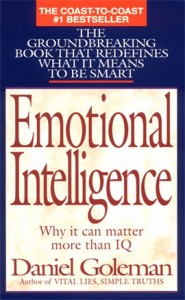 The term was invented by psychologist and journalist Daniel Goleman in his 1996 science bestseller, Emotional Intelligence. The term was invented by psychologist and journalist Daniel Goleman in his 1996 science bestseller, Emotional Intelligence.
More on Daniel Goleman and his works
****Emotional Intelligence and Trading
***11 Signs You Have High Emotional Intelligence
And remember: needless drama, the "games", gossip and negativity stop us from being the best we can be. Entendance gossip and negativity stop us from being the best we can be. Entendance  The Real Fight Is Within: Mental Hygiene I
If you like this beach, then you can help your friends locate it by letting them know about Fred & EntendanceInvestors Beach.
Let's all make this place a thriving sheltered Club for excellence, education and information.
James Montier’s behavioral investing The brain has two main information processing systems; the reflexive and the reflective. The brain defaults naturally to the emotional or reflexive system, as opposed to the objective, or reflective system. It may surprise you to know that reflective thinking is tiring. The brain is a muscle, and when used for a long period it becomes fatigued. Brain fatigue can, and does, affect performance.
Unfortunately, there are two human qualities that complicate decision-making. Firstly, the brain is hardwired to enjoy short-term gratification. Secondly, the brain dislikes social-exclusion behavior (the brain prefers a herd mentality). What's more, according to James Montier, the brain is also susceptible to 22 other forms of bias. The majority of these biases revolve around self-deception, simplification, emotion and social interaction. The Brandes Institute researchers picked out eleven key emotional biases that they believe are the most damaging to investor performance over the long run.
The first four key criteria relate to the central bias of self-deception. Two of these are overconfidence and overoptimism. More often than not, investors overestimate their ability and feel more confident than they should. Two other self-deception factors are self-attribution and hindsight. Simply put, people credit their skill for good outcomes and blame bad luck for bad outcomes.
On the central topic of simplification, once again there are four primary traits that hold investors back. Firstly, anchoring: People often grasp non-relevant information, often believing that are making better decisions. Secondly, representativeness: People judge by appearance rather than likelihood. People like a good story over hard facts. Thirdly, framing: More often than not, investors will give different answers depending on the same, but differently framed, questions. Fourth, loss aversion: People usually give more weight to losses than to corresponding gains. On the two central topics of emotional and social interaction, James Montier notes that the two main traits holding investors back are:
1.Regret theory: The fear of being wrong outweighs the cost in objective economic terms
2.Herding: Neurologists have found that real pain and social pain are felt in the same part of the brain. Contrarian strategies are the investment equivalent of seeking out social pain...
[PDF]
NEW! Real-Time Trader's Feed at Investing & Trading *Inquiring minds only!
Sollte dir dieser Strand gefallen, dann kannst du deinen Freunden behilflich sein, indem du sie über Fred & EntendanceInvestors Beach informierst. Lasst uns gemeinsam diesen Ort zu einen blühenden Club für Vortrefflichkeit, Bildung und Information machen!
 We will never underestimate our own stupidity! Stupidity Chapters I II III IV V VI & VII here We will never underestimate our own stupidity! Stupidity Chapters I II III IV V VI & VII here 
|
|
|
|
Post by Entendance on Sept 17, 2015 17:19:53 GMT -5
2017: Investing & Trading
someone just copied me...Dear mr. Lund, why on earth are you copying me!  "Trading for a living is a business. Treat it as such." Must read! So, You Want to Trade for a Living? Getting Started
2018: Cheap Stocks
Traders only
Steve Burns Here are the errors we make that cause the market to take our money:
1. Traders miss a trade setup, then take it late in the move. Chasing a trade is rarely a good decision. Buy right or sit tight.
2. Traders buy a dip before it really reaches a good risk/reward setup.
3. Traders buy a dip before there is any sign of a reversal.
4. Traders wait for the perfect moment and end up with no setups.
5. Traders hold onto opinions after price action has proven them wrong.
6. Traders are stopped out of ordinary price action because their stop losses are too close, and their trades aren’t given enough room to breathe.
7. Traders perpetually short uptrends and buy downtrends, missing the easy money and creating losses.
8. Those that spend more time trading than studying will have their money taken by traders devoted to learning.
9. Caring more about personal opinions than price action is the best way to donate money to the market.
10. Holding onto a losing trade because you don’t want to take the initial loss, is a great way to turn a small loss into a big one.
Are you ready to trade?
1. Do you have a quantified trading system of entries and exits? Have you found a way to capture trends in your time frame by studying historical price action?
2. Have you backtested your system adequately? Do you know what the possible odds are for your trade setups based on historical price data?
3. Do you have a strong support system in place? Do you have friends and family that support your desire to be a trader?
4. Do you have enough trading capital? Serious active traders should have adequate capital. Low capital will have trouble overcoming commissions, and even the bid/ask spread in lower volume markets.
5. Do you have a written trading plan? You should create a written plan when the market is closed so you know what actions you will take when the market is open.
6. Do you fully understand proper risk management? It is imperative that you understand the mathematical risk of ruin before you start trading. Never losing more than 1% of your trading capital on any one trade, is a great place to start.
7. Have you decided what position size you are emotionally comfortable trading? You must trade with a position size small enough that you can follow your trading plan. A position size too large can distract you and make you veer from your plan.
8. Do you have realistic expectations about returns? The greatest traders in the world return 15% -25% a year. Trying to get rich quick is the fastest way to go broke.
9. Do you have enough faith in your methodology to trade it through drawdowns? You have to know the consecutive losses to expect from your trading system, and accept it when it happens.
10. Do you have faith in your abilities to trade like it is a business? You have to trade like you are a casino, knowing the odds are in your favor long term, and not like a gambler who disregards the odds that are against you.

Trading is tough
"A speculator is a man who observes the future, and acts before it occurs." - Bernard M. Baruch
So You Want To Trade For A Living...Be advised: there are no shortcuts to any place worth going...Entendance
Action without study is fatal. Study without action is futile.

<...When a stock you own is crashing, you need to ask yourself two things:
1) Is the reason I bought it still valid?
If you bought a tiny biotech stock because you thought its drug was going to succeed, but it failed, you need to get out... Don't say, "Well, the company has other things cooking, too" or "Well, I've lost SO MUCH already, how much worse can it get?"
Don't catch yourself saying either of those things. If the reason you bought the stock is no longer valid, get out.
2) What is my "point of maximum pain"?
How much are you willing to lose before crying "uncle"?
You should try to define this point when you enter the trade. That way you've made a rational decision to sell in advance, not an emotional decision right at the moment the stock is down.
My preferred exit strategy:"trailing stops.> -Dr. Steve Sjuggerud
Jonathan Hoenig: The 80/20 rule
<One of the most influential — though seldom mentioned — economists of the 20th century was Vilfredo Pareto, an Italian who in 1906 developed a simple mathematical formula now widely known as the 80/20 rule. Although other scholars have subsequently refined it, the basic idea remains the same: In almost all cases, the vast majority of the results are created by a small number of causes.
Although it's most commonly applied to sales and management issues, the 80/20 rule applies to trading quite well. Despite the high premium often placed on being a good stock picker, I've found that the vast majority of profits come from a small handful of trades. And while picking a stock that drops isn't fun, it's the cost of doing business and can't be permitted to derail one's confidence. The best traders are selective in where they put their money to work. They can't bet on everything; what counts is focusing on only their top ideas.
As I always point out, the point of investing is to make money. It would be quite convenient if every investment rose a comfortable 10% — but in reality, it's always a small handful of big winners that account for the majority of a portfolio's overall return.
The lesson of the 80/20 rule is to focus on the 20% that actually matter. While many stocks go nowhere at all, investors who have the patience to let their winners run will usually find two or three trades a year that can rise 50% or more. A relatively small amount of risk capital produces the lion's share of the overall gain.
Of course, traders never know in advance which investments will be the important 20%. Some are intent on making money with a specific stock; it's the flexible traders who don't fight a trend, but follow it. Although they were certain that XYZ was the next big thing, if the market isn't confirming this suspicion, good traders are humble enough to move on.
Just as only a small percentage of winners will garner big gains, the 80/20 reality of trading is that an equally modest number of trades ever become winners in the first place. In my experience, I'd say close to 80% of my total trades are either break-even "scratches" or downright losers. I'm "right" only about 20% of the time. But by focusing on keeping the losses small, the relatively few number of winners more than make up for the stocks that drop or go nowhere at all.
Of course, what usually cripples investors isn't the market, but their own self-destructive loss of discipline. Because many of trades will be downright wrong, investors must to learn to emotionally let themselves off the hook. Yet what motivates many traders isn't making money, but being right. So when XYZ moves five points against them, they don't just chalk it up as a loss and move on, but obsessively add to the position, intent on saving face more than money. I've been there, and trust me: You inevitably end up losing both.
The lesson of the 80/20 rule is being able to handle the 80% of trades that don't work out. Being wrong, even on a majority of trading ideas, matters only to the extent that the trader can't deal with it. As a veteran of far too many shame spirals, let me tell you: A disciplined approach beats going from the gut every time. Remember, it's managing the trade — not simply picking a stock — that has the biggest impact on the bottom line. Repeat this to yourself often enough, and dumping an investment becomes as mundane as taking out the trash.
There are thousands of investment options out there — and some people act as if it's their constitutional responsibility to have positions in as many of them as possible. This results in far too many portfolios being a patchwork of ideas rather than a few strategic themes. There's a big difference between being diversified and being disorganized.
As I often point out, traders can't invest in everything. Selectivity is crucial. Trading for the mere thrill of it results in far too many suckers' bets. It's a losing approach.
Out of the total number of trades I consider, I focus on only the top 20% of my ideas. It's just too expensive and time consuming to put money to work on anything but my best.
So don't just buy a stock because you know the company, like its product or hear it mentioned on cable TV. To quote Gordon Gekko, "I look at a hundred deals a day...I choose one." You should be equally discriminating. The trades I make are those I feel compelled to make out of my own selfish interest. They don't just excite me — they keep me up at night.
Although the 80/20 rule wasn't developed for traders, it's relevant nonetheless. Whether you're evaluating your profits, trades or ideas, the lesson is always the same. First, focus on what matters. Next, run with it.>
CONDITIONAL ORDERS TUTORIAL
|
|
|
|
Post by Entendance on Sept 22, 2015 16:45:14 GMT -5
2017: Investing & Trading
***Meeting With Triumph and Disaster: Some Lessons 
 Brett Steenbarger: <1) Resilience - Successful traders take risk. Successful traders are sometimes wrong. Successful traders take hits. Successful traders learn from the hits, get up, and move on. They are resilient. They succeed, as Churchill observes, by moving from failure to failure with enthusiasm.
 2) Selectivity - Successful traders have clear criteria for what makes good trade ideas. They also have separate criteria for what turns good ideas into good trades. They don't watch everything, and they certainly don't trade everything. They wait for good ideas to become good trades. 2) Selectivity - Successful traders have clear criteria for what makes good trade ideas. They also have separate criteria for what turns good ideas into good trades. They don't watch everything, and they certainly don't trade everything. They wait for good ideas to become good trades.
3) Calling - Successful traders have an uncanny sense that this is what they're meant to be doing. It's not a job, and it's not a career for them. It's a calling. That's the only thing that can keep people searching and re-searching, banging away for good ideas and good trades. And it's the only thing that enables them to gain the immersive pattern recognition experience that separates them from average traders.>
"Accept that every time you invest, you take a risk with your money. Do all you can to minimize those risks. Work through the alternatives. Spread your wealth around. Look for antifragile opportunities. And banish the word ‘guaranteed’ from your mind." -Monevator
"When you personalize the market, you fall into the trap of trying to be right rather than trying to make money." -Ben Carlson

Fred & EntendanceInvestors Beach...because this place is for Uncolonized Minds. 
|
|
|
|
Post by Entendance on Jan 15, 2016 6:06:24 GMT -5
2017: Investing & Trading
20 Terrible Ways to Trade
Good trading is very basic; it’s trading with an edge to capture a trend in your own time frame, while managing your risk exposure carefully with the right position sizing and stop loss.
There are endless ways to trade badly. You can change these if you make an effort and become self-aware. Be on the lookout for these pitfalls.
Here are the top 20:
1.Angry trading: When you trade angry and want to win from the time you enter to the time you exit, you get angrier and make mistakes if your trade goes against you.
2.Loose trading: You trade too big, you stay in losing trades too long, you chase trades after the entry has passed, and you shift from discipline to opinions.
3.Tight trading: You set stop losses too close, you trade too small, or you exit winning trades too quickly.
4.Aggressive trading: Trading too big on every entry with an all or nothing mentality. You think each entry is a great trade, and you try to maximize your gains by risking large losses through big position sizing.
5.Passive trading: You have no strategy for entries or exits. You chase the price action any way it goes with no defined strategy.
6.Over trading: You take more trades than you really should, causing excessive commissions. Over trading is caused by boredom and the fear of missing out.
7.Entitlement trading: You believe the market owes you money because of the effort you have put into your trading system. You view losses as unfair.
8.Annoyed trading: Each loss causes you to be frustrated. The more times you lose, the more erratic your trading becomes as you search for trade entries with no edge.
9.Biased trading: You believe so strongly in the direction of the market you become blind to the fact that you are wrong. You begin to filter everything through your bias so you can maintain your belief in market direction, even when all the evidence is against you.
10.Injustice trading: You believe that they are out to get you. They went after your stop, they are idiots, they are out to cause you to lose. Schizophrenic trading.
11.Frustration trading: You can not make good decisions because the price action frustrates you.
12.Sloppy trading: You don’t do your homework. You are disorganized and have no trading plan or system.
13.Revenge trading: You trade with the belief that the market owes you money. It skews your perspective and gives your trading a bad motivation.
14.Underfunded trading: You trade with an account so small that commissions are a high percent of your account. You trade too large in an attempt to grow your money fast and blow up your account.
15.Shame trading: You are embarrassed to trade because you were to confident and vocal about trades that went sideways.
16.Distracted trading: Your trading is low on your priority list and you easily lose your focus.
17.Scared trading: You have trouble entering your trades because you are afraid of losing trades.
18.Envy trading: You get demoralized by someone else’s great trading that you find it hard to trade your own system.
19.Demolition trading: You feel unworthy of trading success and money so you subconsciously trade in a way that destroys your account and helps you fulfill your prophecy.
20.Trading with no edge: Your trades and results are random. The money you make through luck are given back during unlucky streaks.
-Steve Burns
**The safest places in the world to store your gold your silver and your cash
***Losses Hurt Psychologically far more than Gains Give Pleasure – Prospect Theory
****How to Determine Proper Position Size When Forex Trading & more...at How to safely protect your life your liberty and your assets Fred & EntendanceInvestors Private Beach. Members Only Area. Join us: become members!

Linda Bradford Raschke: 1.Buy the first pullback after a new high. Sell the first rally after a new low.
2.Afternoon strength or weakness should have follow through the next day.
3.The best trading reversals occur in the morning, not the afternoon.
4.The larger the market gaps, the greater the odds of continuation and a trend.
5.The way the market trades around the previous day’s high or low is a good indicator of the market’s technical strength or weakness.
6.The previous day’s high and low are two very important “pivot” points, for this was the definitive point where buyers or sellers came in the day before. Look for the market to either test and reverse off these points, or push through and show signs of continuation.
7.The last hour often tells the truth about how strong a trend truly is. “Smart” money shows their hand in the last hour, continuing to mark positions in their favor. As long as a market is having consecutive strong closes, look for up-trend to continue. The up trend is most likely to end when there is a morning rally first, followed by a weak close.
8.High volume on the close implies continuation the next morning in the direction of the last half-hour. In a strongly trending market, look for resumption of the trend in the last hour.
9.The first hour’s range establishes the framework for the rest of the trading day.
10.A greater percentage of the day’s range occurs in the first hour then was the case in the past, and thus it has become increasingly important to trade aggressively if there are early signs of a strong trend for the day.
11.There are four basic principles of price behavior which have held up over time. Confidence that a type of price action is a true principle is what allows a trader to develop a systematic approach. The following four principles can be modeled and quantified and hold true for all time frames, all markets. The majority of patterns or systems that have a demonstrable edge are based on one of these four enduring principles of price behavior. Charles Dow was one of the first to touch on them in his writings.Principle One: A Trend Has a Higher Probability of Continuation than Reversal
Principle Two: Momentum Precedes Price
Principle Three: Trends End in a Climax
Principle Four: The Market Alternates between Range Expansion and Range Contraction!
12.In the world of money, which is a world shaped by human behavior, nobody has the foggiest notion of what will happen in the future. Mark that word – Nobody! Thus the successful trader does not base moves on what supposedly will happen but reacts instead to what does happen.
Sometimes you just have get away from the screens. Entendance

If you like this beach, then you can help your friends locate it by letting them know about Fred & EntendanceInvestors Beach.
Let's all make this place a thriving sheltered Club for excellence, education and information. |
|
|
|
Post by Entendance on Jan 31, 2016 5:06:39 GMT -5
2017: Investing & Trading
***The Best Trading Strategy for Trading Trend and Range***
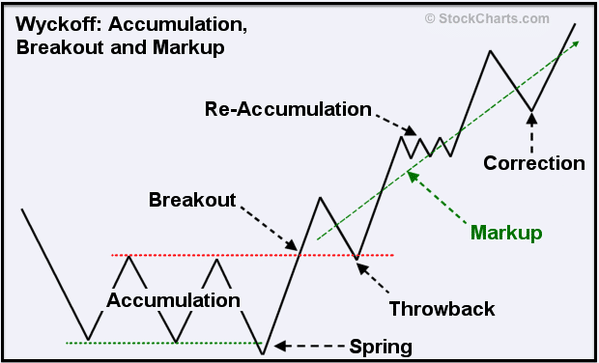
**********
"I’ll tell you now that the best strategy in almost any case is to find a role-model, someone who’s already getting the results you want, and then tap into their knowledge. Learn what they’re doing what their core beliefs are, and how they think. Not only will this make you more effective, it will also save you a huge amount of time because you won’t have to reinvent the wheel." — Anthony Robbins

***The Ultimate Trading Education***

More at Fred & EntendanceInvestors Private Beach. Members Only Area.
Join us! Become a member!

|
|
|
|
Post by Entendance on Apr 4, 2016 2:58:04 GMT -5
It doesn’t take long to identify one or more of these in your thinking. Just recognizing these traps can be helpful.
10 Cognitive Distortions 1. All-or-nothing thinking : You look at things in absolute, black-and-white categories.
2. Overgeneralization: You view a negative event as a never-ending pattern of defeat.
3. Mental filter: You dwell on the negatives and ignore the positives.
4. Discounting the positives: You insist that your accomplishments or positive qualities don’t count (my college diploma was stroke of luck…really, it was).
5. Jumping to conclusions (loves alcoholic families): You conclude things are bad without any definite evidence. These include mind-reading (assuming that people are reacting negatively to you) and fortune-telling (predicting that things will turn out badly).
6. Magnification or minimization: You blow things way out of proportion or you shrink their importance.
7. Emotional reasoning: You reason from how you feel: “I feel like an idiot, so I must be one.”
8. “Should” statements (every other word for me): You criticize yourself or other people with “shoulds,” “shouldn’ts,” “musts,” “oughts,” and “have-tos.”
9. Labeling: Instead of saying, “I made a mistake,” you tell yourself, “I’m a jerk” or “I’m a loser.”
10. Blame: You blame yourself for something you weren’t entirely responsible for, or you blame other people and overlook ways that you contributed to a problem.
-Therese Borchard All about***Cognitive Dissonance
I've said it before and I'll say it again:

The Act of Will is the most influential and important book to me. I urge you all to please take your own-time just on the path of being Man/Woman for Others: read meditate and apply the Act of Will and Psychosyntesis. Entendance
The Act of Will ROBERTO ASSAGIOLI, M.D. Chapter 5 THE SKILLFUL WILL: PSYCHOLOGICAL LAWS
1 Sensation 2.Emotion — Feeling 3.Impulse—Desire 4. Imagination 5. Thought 6. Intuition 7. Will 8.Central point:The I, or personal self The relationships among these functions are complex, but there are two kinds of interactions: first, those that take place spontaneously, one might say mechanically; second, those that can be influenced, governed, and directed by the will. Psychological Forces This leads to a consideration of the difference between what can be called the"plastic" unconscious and the "structured," or "conditioned," unconscious. In classical psychoanalysis the emphasis is on the latter: detecting repressions, complexes,conflicts, and attempting to eliminate them are the chief aims. But there is a large portion of the unconscious which is not thus conditioned; it plastic, and its susceptibility to being influenced makes it like an inexhaustible store of unexposed photograph film. The conditioned unconscious, on the other hand can be compared to an accumulation of already expose film. In this respect we are like motion- picture earner functioning uninterruptedly, so that at every moment new section of the sensitive film is receiving impressions of the images which happen to appear before the lei But the new impressions thus received do not remain in a staticcondition. They act in us; they are living for that stimulate and evoke other forces,in accordance with the psychological laws which will be enumerated in the nextsection. This may be looked at from a different angle, by employing another analogy. Just as our body is continually absorbing vital elements from the outer world, from the air, from light, water, and from various foods, and these elements exercise various influences upon it according to their nature—be they beneficial or harmful, wholesome or unwholesome—so in the same way our unconscious iscontinually absorbing elements from the psychological environment. It breathes, as it were, and unceasingly assimilates psychological substances whose nature determines whether their effects upon us are beneficial or harmful. But we can also learn to use these influences skillfully, to build in ourselves what we choose to have. For their, dynamics are regulated by laws as definite as thosegoverning physical energies.The various psychological functions can interpenetrate and interact, but the will is in a position to direct their interpenetration and interaction. The centrality of the will allows it supremacy through its regulating power, but this power is in turn governed by psychological laws. Ignoring these laws means to waste, or to risk misusing, the inherent power which the will, because of its centrality, has. So knowledge of these laws, and the use of techniques based on them, is of fundamental importance. We will enumerate here those which have a practical bearing on the use of the will. I believe that knowing these laws and some of their practical applications, which we will discuss in the next chapter, provides a firm basis for anyone who would train his will to act skillfully. The reader may want tostudy the laws once and then return to them later to solidify his understanding. Law I—Images or mental pictures and ideas tend to produce the physical conditions and the external acts that correspond to them.
Law II—Attitudes, movements, and actions tend to evoke corresponding images and ideas; these, in turn (according to the next law) evoke or intensify corresponding emotions and feelings. Law III—Ideas and images tend to awaken emotions and feelings that correspond to them. Law IV—Emotions and impressions tend to awaken and intensify ideas and imagesthat correspond to or are associated with them. Law V—Needs, urges, drives, and desires tend to arouse corresponding images,ideas, and emotions.Images and ideas, in turn (according to Law I) prompt thecorresponding actions. Law VI—Attention, interest, affirmations, and repetitions reinforce theideas, images, and psychological formations on which they are centered.
Law VII—Repetition of actions intensifies the urge to further reiteration and renders their execution easier and better, until they come to be performed unconsciously. Law VIII—All the various functions, and their manifold combinations in complexes and subpersonalities, adopt means of achieving, their aims without our awareness, and independently of, and eve) against, our conscious will.
Law IX—Urges, drives, desires, and emotions tend and demand to be expressed.
Law X—The psychological energies can find expression: I. directly (discharge—catharsis) 2. indirectly, through symbolic action 3. through a process of transmutation...
La volontà non si studia in teoria, si sperimenta, si allena, si rafforza. Abbiamo tutti una volontà, ma spesso non lo sappiamo o non la utilizziamo, se non sporadicamente, ma non è mai troppo tardi per svilupparla di più!
Roberto Assagioli: The Act Of Will
|
|
|
|
Post by Entendance on Jul 31, 2016 16:26:00 GMT -5
2017: Investing & Trading
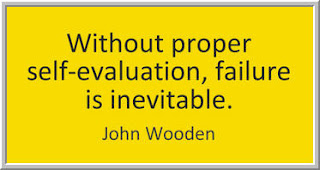
"Physicians are taught that diagnosis precedes treatment: you have to identify and understand a problem before you prescribe medications or initiate procedures. Many symptoms can have multiple underlying causes. Is an abdominal pain related to an ulcer, might it reflect an inflammatory bowel condition, or might it be an early sign of appendicitis? Location matters. Type of pain matters. Timing of the pain matters. Before you initiate treatment, you gather information: a history and physical, blood tests, imaging studies. Only after thorough evaluation do you intervene. That is because treatments themselves carry risks. Physicians know that their job is to "above all else, do no harm." If you don't understand a problem, don't begin surgery; don't prescribe a medication with side effects.
The process of evaluating and gathering information before taking action is very relevant for traders. When we act as our own trading coaches, in a sense we act as our own physicians. If our trading results are not so healthy, our task is to understand why, so that we can initiate the right corrective measures. To change our trading when we don't truly understand the problems we're facing is to run the risk of doing further harm. Alterations of our trading can bring side effects and complications as well as solutions.
So how can we accurately diagnose the problems that we encounter in running a trading business? I propose that the great majority of trading problems fall into one of three categories. Knowing which category is relevant to your problem is an important step in identifying potential solutions.
1) The trading problem is a business problem - A while back, a trader reported to me that his trading was not making the kind of money that he had hoped. We examined his performance statistics and it indeed seemed as though he was making money. His hit rate on trades was favorable and he was making more money on winning trades than losing ones. His Sharpe ratio--the amount of money he was making per unit of risk taken--was solid. So what was the issue? Quite simply, he had a small trading account. He could not make significant money because he started from a small capital base. If he leveraged his account too much, his drawdowns would eventually place him in a risk-of-ruin situation even though his overall trading was sound. What he needed was greater access to capital. The answer wasn't a psychological technique; nor was the answer to change his trading. The answer was to gain greater access to capital. I helped him identify a proprietary trading firm that fronted his trading and he found far greater monetary success. This was a business problem, pure and simple. A different trader was struggling because he was following too many markets and tracking too much information. Our evaluation found that tracking all this information did help his trading. What the trader needed was an assistant to help him sift through information. His trading had grown to the point where he needed to build out a team. That's a business problem, requiring a business plan and a new business direction.
2) The trading problem is truly a trading problem - One of the best diagnostic processes for any trader is to take an inventory of winning and losing trades and identify potential patterns of strength and weakness. A trader I met with conducted such an assessment and found that he consistently lost money in low volatility, rangebound markets. This was because he was trading momentum patterns. His problem was that he lacked reliable and valid tools for identifying market regimes. Once he developed a couple of screening tools, he could then focus on only those markets that were trading with higher volume and volatility and ignore the ones that were slow. He also learned to pull back from trading when markets overall were slow and to take proper risk when his reliable breakout patterns were triggered. His trading problem was creating frustration and discouragement, but it would have been a mistake to focus on emotions alone. He needed to better identify and adapt to changing market conditions. No amount of psychological, self-help methods could have solved his problem.
3) The trading problem reflects a psychological problem - Sometimes the patterns of winning and losing trades have less to do with market conditions than with the condition of the trader. One trader I knew had trouble accepting losses and became angry and frustrated after drawdowns. This led to classic revenge trading to make the money back. Of course, such reactive trades only further served to deepen the losses and increase the frustration. The underlying problem was that the trader could not emotionally distinguish between losing on trades and being a loser. He viewed losses as failures and took those personally. Other times, traders may find themselves making poor decisions out of boredom or overconfidence. The answer to these situations is to recognize one's "triggers"--the situations that set off the poor trading--so that those can be processed in a different fashion. The trader who became angry when losing engaged in ongoing visualization exercises where he rehearsed a different kind of self-talk during drawdowns. Eventually he internalized this new self-talk and was able to not take losses so personally and even learn from them.
Too often traders fiddle with their trading and make large changes in their risk taking without properly going through a self-evaluation. Successful traders spend as much time studying themselves and their trading as studying markets. In the patterns of your best and worst trades is the information that can make you the best trader you can be." Further Reading: Evaluating Yourself as a Trader

A successful developing trader recently wrote to me about a psychological obstacle in his trading. I'll quote him, so that you can appreciate the problem as he is experiencing it:
"What is the biggest challenge I face after gaining a solid technical knowledge and skill base? I think it's frustration. Most often: 1) frustration of not being able to explain to myself what's going on with the market's price action at a given time; 2) frustration driven by understanding what's going on in the market, but not being able to make an execution because of poor risk/reward and/or absence of proper setup to enter; 3) frustration after making a dumb mistake and/or acting wrong while not in 100% mental shape.
Based on the 3 points above, it seems that part of myself is acting as a perfectionist...while another part of me does not have the confidence that will allow me to be more flawless and move to the next level...
I have developed decent self-observation and can relatively quickly determine when I am not 100%. You know: the tension, the accelerated breathing...that feeling in the stomach...Although I realize in real time that something is off, that same feeling makes me uncomfortable and is also harming my concentration...Let me add that I do not always feel that way when some of the triggers occur, so I would NOT describe it as a critical and uncontrolled situation. But, yes, it is a barrier I am struggling with..."
This situation will be familiar to many active traders: frustration intrudes during the trading process and threatens to interfere with our best decision-making. As the perceptive reader notices, this can even occur when we are relatively self-aware and in touch with that frustration. How can we move past frustration?
The key is recognizing that frustration occurs when we have a need and that need is thwarted. If we eliminate or change the need, the frustration melts away. If I'm a perfectionist, I create many artificial needs. Perhaps I feel a need to be 10 minutes early for every appointment on my calendar. That will create frustration when I am caught in traffic. If I can accept that I will be just on time or even a bit late once in a while, the traffic is no fun, but it's also no threat. Frustration is a function of expectation--and perfectionism creates excessive expectations.
So what is our trader's need? It's the need to trade, the need to make money. If the market isn't making sense, there's no trade to put on and no money to be made. If the setup isn't there, the trade isn't there and neither are the profits. If a bad trade is placed, the fruits of a good trade are erased and there go profits. That same dynamic can also make it difficult to step away from screens, even though the trader recognizes in real time the signs of frustration. It's not OK to miss opportunity.
Our trader recognizes that there are occasions in which he finds himself thwarted but is not dominated by frustration. Those solution occasions are important to figure out. The capacity to tolerate frustration as an observer and not act on the frustration is true self-control. It is also true self-confidence to recognize that one doesn't always have to trade and make money to be a successful trader. The need to trade and make money, ironically, *feeds* a lack of confidence because it reinforces the notion that we're never good enough, we always have to do more and better.
I suspect those exception situations where the triggers occur but the frustrated trading does not are occasions in which there is a degree of genuine contentment and peace with oneself. That is the antidote to frustration. If you can accept where you're at now and accept that it's OK to not be trading or to make a mistake, you eliminate the expectation that drives the frustration. "I know my best setups, I know how to make money, I'll know what to do when the opportunities present themselves"--that is real confidence. You no longer have to *make* things happen; you have the confidence that, if you do the right things, they will happen over time.
Imagine starting each trading day with a meditation that emphasizes imagery based on peace, contentment, and gratitude for where one is at in trading--and in life. Imagine taking a trading break midday to clear one's head (fatigue is a great breeding ground for frustration) and come back to markets refreshed. Imagine stepping away from the screens each time frustration appears and returning to a few deep, slow breaths and the images from the meditation. Frustrations will always be part of our experience, but they don't have to become drivers of our actions. The capacity to step away from self-demands gives us control and expresses genuine confidence. -Brett Steenbarger, Ph.D.
|
|
|
|
Post by Entendance on Oct 5, 2016 5:18:49 GMT -5
 
Are you among them? Cognitive dissonance is a powerful drug. It makes otherwise-very-intelligent people goofy and incoherent in their thinking and blinds them to certain realities that they should normally see right in front of their noses. I witness it all the time in the field of economics — a key piece of logic, a key fact that certain people absolutely refuse to take into account simply because they have a singular idea of how the world works and they cannot allow that idea to ever come into question. They would rather leap into a mental gymnastics routine worthy of an Olympic gold medal than examine the truth. And if you confront them on it, they’ll accuse YOU of being the one in denial. -Brandon Smith
***A Visual Study Guide to COGNITIVE BIASES
Becoming aware of our cognitive biases, and their implications, can help us stay on the right course...
 24 Cognitive Biases That Are Warping Your Perception of Reality 24 Cognitive Biases That Are Warping Your Perception of Reality
50 Cognitive Biases in the Modern World
11 Cognitive Biases That Influence Political Outcomes
Yamile A. Perez: The cognitive consistency theory
***How Cognitive Dissonance Affects Your Relationships

 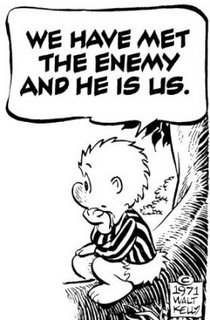
The Real Fight Is Within: Mental Hygiene X
"There are two ways to be fooled. One is to believe what isn’t true; the other is to refuse to believe what is true." — Søren Kierkegaard
- Denial (the first stage) is an assertion that something said, believed, alleged, etc., is false (5 stages)
- Cognitive dissonance is a condition of conflict or anxiety resulting from inconsistency between one’s beliefs and one’s actions.
- Confirmation bias is a tendency for people to prefer information that confirms their preconceptions or hypotheses, independently of whether they are true.
Cognitive Dissonance, Economics & Politics People often discount evidence that contradicts their firmly held beliefs. However, little is known about the neural mechanisms that govern this behavior. ***Neural correlates of maintaining one’s political beliefs in the face of counterevidence
 "Since learning about confirmation bias, I keep seeing it everywhere!” "Since learning about confirmation bias, I keep seeing it everywhere!”
***Cognitive bias cheat sheet***
( Because thinking is hard) Because thinking is hard)

*** Mistakes Were Made (But Not by Me):*** ‘Blind Spots’ 
***20 Cognitive Biases That Affect Your Decisions
Aug. 31, 2018 Magnified by the internet’s algorithms, our primitive biases make our fears go viral
Beware!
The strong tendency in us to interpret all new information through the lens of our prior beliefs. Whatever your political philosophy is, you can easily immerse yourself into media outlets, social media and internet content that exclusively reaffirm your convictions. One can comfortably spend hours a day consuming political & economic information without once encountering a differing viewpoint: confirmation bias.
Quando l'ascia entrò nel bosco, molti alberi dissero: "Almeno il manico è dei nostri".
Bias di conferma (confirmation bias)
Questa “scorciatoia mentale errata” si verifica in particolar modo tra i sostenitori di partiti politici o altre ideologie (vedi i fanatici delle “diete alimentari”). Nello specifico, è nella nostra natura dare maggiore rilevanza alle sole informazioni in grado di confermare la nostra tesi iniziale.
Bias cognitivi: cinque modi veloci per ingannarsi da soli
La lista di bias cognitivi che ti fregano più spesso
Le Distorsioni Cognitive
Le 15 più comuni distorsioni cognitive
Le sette distorsioni cognitive nella depressione

The 5 Ways Emotional Neglect Causes Borderline Personality Disorder
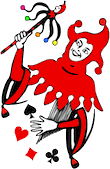 ...your joker:***Understanding the slave mentality ...your joker:***Understanding the slave mentality
Investing & Trading Investors Member Comments: Two cognitive psychology mistakes are common among traders
John Kicklighter:
• Cognitive biases are a patterns where people frequently deviate from rationality - and are very common in trading
• We focus on three biases that commonly build on each other: anchoring, confirmation bias and availability cascade
• Monetary policy themes, cross correlations and risk connections are reviewed with these biases in mind.
***Psychological Tests & Quizzes***
***Know-It-Alls Tend to Overestimate What They Know
Joyce Ehrlinger, Kerri Johnson, Matthew Banner, David Dunning, Justin Kruger Why the unskilled are unaware: Further explorations of (absent) self-insight among the incompetent
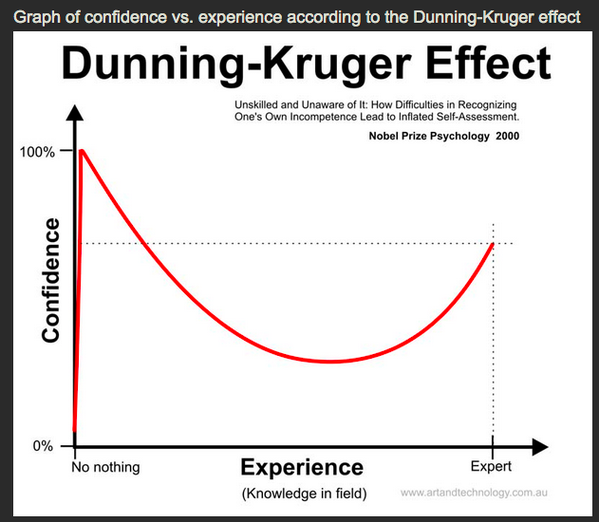 ***Stupidity Chapter XXX ***Stupidity Chapter XXX
Mental and spiritual preparation I here
The Real Fight Is Within: Mental Hygiene II here
.jpg)
The average folks can’t handle the truth.
Psychologists call this behavior***information avoidance
Mental Hygiene III
Mental and spiritual preparation IV
The Real Fight Is Within: Mental Hygiene V
Mental Hygiene VI
Mental and spiritual preparation VII Mental Hygiene VIII Mental Hygiene IX
|
|
|
|
Post by Entendance on Oct 16, 2016 4:41:44 GMT -5
 
The Real Fight Is Within: Mental Hygiene XI
"Some of these ways to deny wrongdoing are direct denials. Others are indirect, and some are downright subtle. Still, each and every one of these 20 examples is an attempt to avoid responsibility..." ***20 Ways People Deny their Own Wrongdoing
"...You can get curious about your beliefs. You can doubt and dispute them. You can revise them. You can adopt beliefs that are healthier and more helpful..." ***An Essential Exercise for Examining Underlying Beliefs

Fred & EntendanceInvestors Beach: a surprise for you is here

Bijoutier, Outer Islands, Seychelles If you like this beach, then you can help your friends locate it by letting them know about Fred & EntendanceInvestors Beach.
Let's all make this place a thriving sheltered Club for excellence, education and information!
Sollte dir dieser Strand gefallen, dann kannst du deinen Freunden behilflich sein, indem du sie über Fred & EntendanceInvestors Beach informierst.
Lasst uns gemeinsam diesen Ort zu einen blühenden Club für Vortrefflichkeit, Bildung und Information machen!
The Real Fight Is Within: Mental Hygiene XII is here The Real Fight Is Within: Mental Hygiene XIII is here
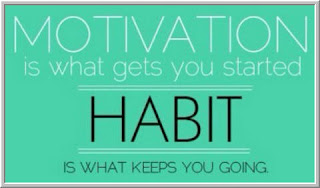
Success is not a function of any single great secret. Rather, success results from turning the right attitudes and actions into patterns that are so strong that they become "boring, old habits". We need motivation to kick start us into doing the right things, but rarely can we count on motivation to sustain the right mindset and behaviors. Repetition--doing the same thing, the same way again and again and again--is what turns a best practice into a robust process.
|
|
|
|
Post by Entendance on Nov 19, 2016 11:01:02 GMT -5
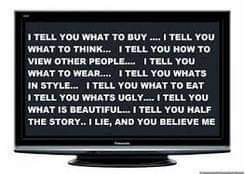

Mental and spiritual preparation XIV

...The Persuasion Continuum... ...Manipulative Marketing & Subliminal Advertising...
...Propaganda... ***Our emotions are manipulated by persuasion & propaganda
***The Who, How, Why of the Deep State, its origin & purpose!

Fred & EntendanceInvestors Beach
Bijoutier, Outer Islands, Seychelles
If you like this beach, then you can help your friends locate it by letting them know about Fred & EntendanceInvestors Beach.
Let's all make this place a thriving sheltered Club for excellence, education and information!
Sollte dir dieser Strand gefallen, dann kannst du deinen Freunden behilflich sein, indem du sie über Fred & EntendanceInvestors Beach informierst.
Lasst uns gemeinsam diesen Ort zu einen blühenden Club für Vortrefflichkeit, Bildung und Information machen!
Mental and spiritual preparation I
The Real Fight Is Within: Mental Hygiene II
Fred & E. Private Beach: Register and Become Members!
Mental Hygiene III
Mental and spiritual preparation IV
The Real Fight Is Within: Mental Hygiene V
Mental Hygiene VI
Mental and spiritual preparation VII
Mental Hygiene VIII
Mental Hygiene IX
The Real Fight Is Within: Mental Hygiene X
The Real Fight Is Within: Mental Hygiene XI
The Real Fight Is Within: Mental Hygiene XII
The Real Fight Is Within: Mental Hygiene XIII The Real Fight is Within: Mental Hygiene XV The Real Fight is Within: Mental Hygiene XVI
***61 Chapters about Stupidity ***Excellence is an Art won by training and abituation
Fred & EntendanceInvestors Beach, just for Inquiring & Uncolonized Minds!
|
|
|
|
Post by Entendance on Jan 15, 2017 9:55:53 GMT -5
|
|
|
|
Post by Entendance on Mar 7, 2017 6:16:19 GMT -5
|
|
|
|
Post by Entendance on May 25, 2017 11:26:17 GMT -5

E. on twitter!
The Real Fight Is Within: Mental Hygiene XVI
***All You Need to Know in Order to Make a Decision
The Science Behind the 5 Second Rule To Take Control Of Your Mind Your brain is constantly playing tricks on you. The hesitation, procrastination and feelings of overwhelm it creates are designed to keep you safe—but playing it safe means you’ll never grow into the person you want to become.
So what do you do when your brain is working against you? You hijack the system. You take control of your mind to master your thoughts. You can use the 5 Second Rule, a mind hack Mel Robbins uses to stop the brain from fighting decisions. Robbins describes using the rule to boost confidence, fight anxiety and increase productivity in her book, The 5 Second Rule. “When you start counting five, four, three, two, one—you awaken your prefrontal cortex. You begin the process of changing. You push yourself in a new direction,” Robbins says.
Backed by science, the 5 Second Rule is a way to make new habits stick, Robbins says. In this video, check out these five psychological principles that give the simple countdown its incredible power.
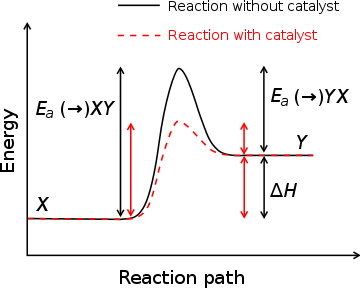
***Get Anything Done with the 5 Second Rule

More at The pursuit of Excellence *Inquiring minds only!
|
|
|
|
Post by Entendance on Jul 27, 2017 7:23:57 GMT -5
|
|
|
|
Post by Entendance on Oct 11, 2017 9:09:41 GMT -5
|
|
|
|
Post by Entendance on Apr 20, 2018 0:58:12 GMT -5
|
|
|
|
Post by Entendance on Jun 12, 2018 11:42:54 GMT -5
Immersus emergo. Fortis cadere, cedere non potest.
 Don't Get Hooked Chapter X Don't Get Hooked Chapter X
1. Overidentifying with the abuser 2. Feeling indebted to the abuser 3. Feeling that “he or she needs me” 4. Explaining almost everything away 5. Protecting the abuser 6. Allowing the abuse to continue to “please” the abuser 7. Wearing multiple “hats” 8. Covering negative emotions in the presence of the abuser 9. Desiring love and affection despite being hurt
***Nine Signs Of Traumatic Emotional Bonding part 1 – part 2
The Entendance Beach: Don't Get Hooked ***9 Chapters

***Entendance on twitter |
|
|
|
Post by Entendance on Jul 31, 2018 4:12:05 GMT -5
Mental and spiritual preparation Chapter XVIII
<The most personal question you can ask another person is “What are you feeling?”
Two things make this question so distinctly personal. First, you are asking about the other person’s feelings. And second, our feelings are the most deeply personal, biological expression of who we are.
Asking a person what they are feeling is inquiring about their deepest self. When you ask this question you are trying to understand or know this person’s inner experience. So this question is very personal, but it is so much more!
Because of the reasons outlined above, “What are you feeling?” is also one of the most caring questions you can ask. It’s a way of saying, “I care about the experience of your inner self. I want to know about the real you.”
“What are you feeling?” has other versions like:
How do you feel? (Emotionally not physically)
What do you feel about that?
What do you feel?
What are your feelings?
Despite the enormous value and power of all these questions, they are, each and every one, drastically underused in today’s world. Jokes and cartoons abound depicting harassed husbands dreading these questions from their wives. Many people think of emotion as a weakness that is not to be talked about. Others believe that asking someone about their feelings is a violation of their privacy. But neither of these assumptions is actually true or valid in any way.
Of course, the questions can be applied in the wrong way, to the wrong person or at the wrong time. But most people, fearing any of that, refrain from asking it to the right person at the right time, potentially missing multiple opportunities to express interest and care on a deeply meaningful level.
3 Ways To Use The Most Personal Question
1.Ask it to your partner in the middle of a difficult conversation to express interest and care on a deep level.
2.Pose it to your child to help her become aware that she has feelings and give her the message that you care what she is feeling.
3.Put it to a friend who seems out of sorts, to help him focus inward.
The Most Important Way To Use The Most Personal Question
Use it on yourself.
Yes, that is right. Use it on yourself.
As seldom as you pose this question to others, I’m willing to bet that you pose it even less often to yourself. But this is a very, very important question for you to ask yourself multiple times, every single day.
In my experience as a psychologist, and in my study of Childhood Emotional Neglect (CEN), I have found that this question prevents Childhood Emotional Neglect in children when they are asked it by their parents. I have also seen that it cures Childhood Emotional Neglect when adults ask it of themselves.
Asking yourself, “What am I feeling?” accomplishes multiple healthy aims.
◾It turns your attention inward as you try to answer it.
◾It forces you to pay attention to your feelings.
◾It helps you learn how to name your emotions.
◾It validates the importance of your feelings.
◾It puts you in touch with your feelings, which will allow them to help and guide you.
If your parents failed to notice or respond to your feelings enough as they raised you (Childhood Emotional Neglect), they set you up to believe that your feelings do not matter. Perhaps you’ve always felt it best to ignore them.
But sadly, living this way is blocking you from feeling all the joy, warmth, connection, excitement, anticipation, and love that you should be experiencing each and every day. Living with Childhood Emotional Neglect is a little like having a cloud hanging over your head through your entire adult life. It affects your inner life, your decisions, and virtually all of your relationships.
Amazingly, all of these adult struggles can be overcome by a combination of self-focus, self-knowledge and emotion training. And all can be accomplished by the simple act of asking yourself what you are feeling.
When you shift your approach to “feelings” from avoidance to acceptance, a truly remarkable change happens in your life. You begin to become aware of a part of yourself you never saw before, and a level of connection with others that you never knew existed before.
So ask. Ask the people who matter, and especially ask yourself.
What are you feeling? What am I feeling?
And reap the rewards of daring to ask the most personal question of all.> -Jonice Webb PhD
Fucking angry!  “What are you feeling?” Entendance “What are you feeling?” Entendance  :Sò 'ngazzate, sò 'ngazzate, sò 'ngazzate nire More here :Sò 'ngazzate, sò 'ngazzate, sò 'ngazzate nire More here

***31 Ways to Spark Your Imagination
***Your Brain Isn’t That Smart |
|
|
|
Post by Entendance on Jan 5, 2019 14:25:41 GMT -5

Mental and spiritual preparation Chapter XIX
The deeper your knowledge, the narrower your outlook 
Seven Warning Signs That You’ve Fallen into the Expertise Trap
1.You’re unfamiliar with new technologies or approaches in your industry.
2.When someone asks why you or the company does things in a certain way, you think, “Well, that’s how we’ve always done it.”
3.When making decisions, you focus on how much risk your options pose rather than on the opportunities they represent.
4.You discover that colleagues are working together in ways you haven’t—such as Slack, texts rather than email, and mobile rather than desktop.
5.You keep proposing the same old strategies and tactics to address new challenges.
6.You try to make old solutions ever more precise rather than pioneering entirely new ones.
7.Millennials leave your team faster than they do other teams in your company. Don’t Be Blinded by Your Own Expertise
 Gorillas and humans, too, imitate each other Gorillas and humans, too, imitate each other

E. on twitter

“The first rule of the Dunning-Kruger club is you don’t know you’re a member of the Dunning-Kruger club”

|
|
|
|
Post by Entendance on Jul 25, 2019 3:29:34 GMT -5
Please note: updated by Tom from Florida while E. unplugged, disconnected and off the grid until September 2019
 May 24, 2019 WITHOUT GOLD THE WEALTHY WILL BE WIPED OUT May 24, 2019 WITHOUT GOLD THE WEALTHY WILL BE WIPED OUT 
 
2017: Investing & Trading
The difference between school and financial markets?
In school, you're taught a lesson and then given a test. In financial markets, you're given a test that teaches you a lesson.
Barry Ritholtz: the Zen of Trading
1. Have a Comprehensive Plan: whether you are an investor or active trader, you must have a plan. Too many investors have no strategy at all -- they merely react to each twitch of the market on the fly. If you fail to plan, goes the saying, then you plan to fail.
2. Expect to Be Wrong: key aspect of successful investing that it bears repeating. You will be wrong, you will be wrong often and, occasionally, you will be spectacularly wrong.
3. Predetermine Stops Before Opening Any Position: sign a "prenuptial agreement" with every stock you participate in: When it hits some point you have determined before you purchased it, that's it, you're out, end of story. Once you have come to understand that you will be frequently wrong, it becomes much easier to use stop-losses and sell targets.
4. Follow Discipline Religiously: the greatest rules in the world are worthless if you do not have the personal discipline to see them through.
5. Keep Your Emotion In Check: emotion is the enemy of investors, and that's why you must have a methodology that relies on objective data points, and not gut instinct. The purpose of Rules 1, 2 and 3 is to eliminate the impact of the natural human response to stress -- fear and panic -- and to avoid the flip side of the coin -- greed.
6. Take Responsibility: Many folks believe "the game is fixed."
To them, I say: get over it. Stop whining and take the proper responsibility for your trades, your losses and yourself.
7. Constantly Improve: Investing is so competitive that you cannot afford to stand still. Investors should constantly seek to raise their skill level by learning as much as possible about the markets, the economy, trading technologies and various schools of investing thought. But whatever you read, you must do so with a keenly skeptical eye, while retaining an open mind ('taint easy to do).
8. Change Is Constant: Heraclitus was a Greek philosopher best known for his "Doctrine of Flux": "The only constant is change."
That doctrine is especially true in the markets. Therefore, as you constantly upgrade your skills, you must remain supple enough to adapt to an ever-changing field of play.
 JONATHAN HOENIG: God Sends Meat, the Devil Sends Cooks
Even imported truffles and filet mignon can be ruined by a bad cook. Likewise, in investment portfolios, even the best trading ideas mean nothing without good technique. When you get right down to it, most people just want stock picks. But we've always tried to emphasize that it's not what you trade, but how you trade that counts. No matter how skilled your stock-picking prowess, bad technique will prove ruinous every time. Investing is a game of speculation. No stocks come with guaranteed results. I'm from the school that says if you're bullish on XYZ, buy it — mostly because the most influential decision isn't necessarily which stock to buy, but how much of it to buy. Your position size shouldn't be too big or too little, but just right.
The most obvious gaff investors make is betting too big. Even the best stocks fluctuate. Investors who put 10%, 15% or 20% of their assets in a single stock at a single price are just asking to get stopped out, most likely at a significant loss. There's a difference between risk and recklessness; the point of trading is to grow big positions, not start out with them.
Conversely, many people spoil their stock picks by betting too small. In determining position size, most people's first step is to characterize potential holdings. They invest a small amount of money in a "risky" stock, and considerably more in one they deem "safe." Although this seems like a smart idea, it's actually a recipe for disaster. Inevitably what ends up happening is the seemingly safe names underperform, and although the "risky" picks might go up, the return doesn't make much difference to the investor because he has taken such a comparatively small position size.
The key is consistency. I can't stress enough the importance of consistent position sizing. It's one of the most overlooked components of successful portfolio management. My advice: Pick a standard trading unit, somewhere between 2% and 5% of your overall portfolio, and stick with it. This ensures that your positions are appropriate to your overall account, as well as to the sizes of your other positions.
Another quick way to spoil a stock pick is, ironically, to have too many other stock picks. We live in a world of scarce resources, and when it comes to investing capital, there's just so much to go around. Although at any given moment there's a list of 20 different companies I'd love to buy, I can't afford to go after anything other than my top few ideas.
As we pointed out last year, you need only a handful of good ideas a year to produce an excellent return. While many people still insist the point of trading is to make a large number of transactions, the truth is that less is often more.
Here's a typical scenario. An investor does the requisite research and decides to buy XYZ. A few days into the trade, he gets bored. Maybe the stock is up, maybe it's down…regardless, it's not providing the high return he'd hoped for. So although the trade is only a few days old and might even be going his way, he finds another promising idea and starts from scratch. Like Pavlov's dog, he's always salivating for another snack. Even if the actual stock picks are golden, the investor will never know about it because he's trading simply to trade, rather than to make money.
The solution for you, of course, is to refine your efforts to a short list of ideas — and go for them. Depending on your account size, you might have up to six trading themes at once. Smaller portfolios, such as those under $30,000, should have considerably less. While I've always got a watch list of potential investments on deck, I'm not too quick to dump a winning trade just because another attractive opportunity comes down the pike. Real moves take time.
The whole point of investing, after all, is to pick winners. But no matter how good your stock picks are, bad technique will render them impotent from the start. Trading the wrong position size and vacillating between too many ideas are easy ways to eliminate the potential of an otherwise promising stock purchase.
Morgan Housel: "Most investors think the decline in transaction costs has been a good thing, but I think the truth is it has been one of the most harmful trends of the last two decades.
It used to cost a fortune to trade stocks. But technology and deregulation has caused the price of brokerage transactions to plunge over the last three decades. "It was $100 a trade a few years ago," former E*Trade CEO Mitchel Caplan said in 2005, "Then all of us came to about $20. And now all of us are converging at $10 or so." Some brokerages will now pay you to trade in certain circumstances.
This might seem like a win for investors. But I know of no evidence showing that lower transaction costs have made investors better off.
The cheaper it is to trade, the more you are likely to trade. And the more you trade, the worse you'll do as an investor.
One-hundred dollar transaction costs make you think hard before making a move. "Do I really want to buy this stock?" "Should I get a second opinion?" "Do I really need to make this switch?" "Should I really sell right now?"
Those are fantastic questions to ask, because they reduce emotionally driven investment decisions.
But when transaction costs round to zero, it's easier to skip those questions and go right to the trigger. Go ahead, trade seven times before breakfast. You'll pay almost nothing in commissions. It's easier than ever.
But that's a bad thing. The amount of time you can invest for is your last remaining edge on Wall Street. Hyperactivity is the surest way to have a miserable experience investing."
Bruce Bower: How to Be More Consistent in Your Trading Bruce Kovner, in his Market Wizards interview, gave his infamous advice on how to be a better trader: “Undertrade, undertrade, undertrade”. I love this quote so much that I have it taped to my computer monitor. I interpret it to mean dialing down the frequency of your trading and the bet size. Instead of trying to get rich quick, just relax, trade smaller size and focus on making better risk/reward decisions. You will get the consistency that you seek. In the ground-breaking book The Power of Habit the author Charles Duhigg studies how we create and maintain habits. The first step is realizing that habits are mostly unconscious, automatic behaviors that we do without thinking, much like getting dressed or taking the dog out every day. Because we have done them so many times, we don’t have to think or make difficult decisions—instead, we can just go on autopilot. One of the reasons why we create habits is because they don’t tax our willpower, which is a limited resource. This frees up our brain’s higher functions for making other decisions that are new or require more cognitive effort. The key to creating habits is setting up these autopilot routines.
According to Duhigg, every habit has three steps:
1.Cue. The circumstances or event that trigger a certain action
2.Routine. The routine action, set of actions or responses that you take
3.Reward. This is the reason that we do something- the reward, prize or alleviation of a problem.
The book digs down to describe certain habitual actions, like brushing our teeth: as we’re going to bed, we add toothpaste to our toothbrush; we brush our teeth; then we get the tingling, minty, clean sensation in our mouth. Bingo. We are hooked and want to brush our teeth every day, forever. Our trading habits should be no different. We need to create a cue; a set of routine actions; and a reward.
When traders say that they want to be more consistent, they usually mean that they want their results to be more consistent. To wit, they want to be profitable more often with fewer drawdowns. They want to experience a smooth, steadily rising equity curve, not a rollercoaster P&L. They want to feel like they are making consistent profits and progress, rather than spinning their wheels. One of the best ways to do that is through making your efforts consistent—because the quality of your output will vary with your input, then you want to make sure that you are taking all of the necessary steps. But if you have the goal of making your results more consistent, then there are a few things you can do. The first is to define what consistent or more consistent means to you—because this is dependent on your style; in fact consistency looks different for different styles. Perhaps the most important part for getting consistent results is understanding risk. The bottom line is: if you want to make your results, you need to take less risk, especially at first. Undertrade, undertrade, undertrade.
|
|
|
|
Post by Entendance on Nov 18, 2019 4:23:35 GMT -5
|
|
|
|
Post by Entendance on Feb 2, 2020 8:19:11 GMT -5
Mental and spiritual preparation Chapter XX
 Start here (The Dunning–Kruger effect is a cognitive bias in which unskilled people make poor decisions and reach erroneous conclusions, but their incompetence denies them the metacognitive ability to recognize their mistakes. The unskilled therefore suffer from illusory superiority, rating their ability as above average, much higher than it actually is, while the highly skilled underrate their own abilities, suffering from illusory inferiority. You don't even know enough to realize just how little you know. People tend to hold overly favorable views of their abilities in many social and intellectual domains.) Start here (The Dunning–Kruger effect is a cognitive bias in which unskilled people make poor decisions and reach erroneous conclusions, but their incompetence denies them the metacognitive ability to recognize their mistakes. The unskilled therefore suffer from illusory superiority, rating their ability as above average, much higher than it actually is, while the highly skilled underrate their own abilities, suffering from illusory inferiority. You don't even know enough to realize just how little you know. People tend to hold overly favorable views of their abilities in many social and intellectual domains.)
(The first rule of “Dunning-Kruger Club” is you don’t know you’re in the “Dunning-Kruger Club”!)
|
|













 More here
More here












 Libri da evitare:
Libri da evitare: 

 Always ask yourself the question “what is the one thing I can do today that will make everything else easier or unnecessary”. Focus on that one thing. If you don’t know what that one thing is, then your one thing is to find out.
Always ask yourself the question “what is the one thing I can do today that will make everything else easier or unnecessary”. Focus on that one thing. If you don’t know what that one thing is, then your one thing is to find out. Mental and spiritual preparation I
Mental and spiritual preparation I








 Can you withstand the draw-down?
Can you withstand the draw-down? 
 Debt is BETTER than cash?
Debt is BETTER than cash?
 ***
***

 <
<  The term was invented by psychologist and journalist Daniel Goleman in his 1996 science bestseller, Emotional Intelligence.
The term was invented by psychologist and journalist Daniel Goleman in his 1996 science bestseller, Emotional Intelligence.
 We will never underestimate our own stupidity! Stupidity Chapters I II III IV V VI & VII
We will never underestimate our own stupidity! Stupidity Chapters I II III IV V VI & VII 




 2) Selectivity - Successful traders have clear criteria for what makes good trade ideas. They also have separate criteria for what turns good ideas into good trades. They don't watch everything, and they certainly don't trade everything. They wait for good ideas to become good trades.
2) Selectivity - Successful traders have clear criteria for what makes good trade ideas. They also have separate criteria for what turns good ideas into good trades. They don't watch everything, and they certainly don't trade everything. They wait for good ideas to become good trades.
















 "Since learning about confirmation bias, I keep seeing it everywhere!”
"Since learning about confirmation bias, I keep seeing it everywhere!” Because thinking is hard)
Because thinking is hard)


 ...your joker:***
...your joker:*** ***
***.jpg)

















 )
)
 “What are you feeling?” Entendance
“What are you feeling?” Entendance  :
:





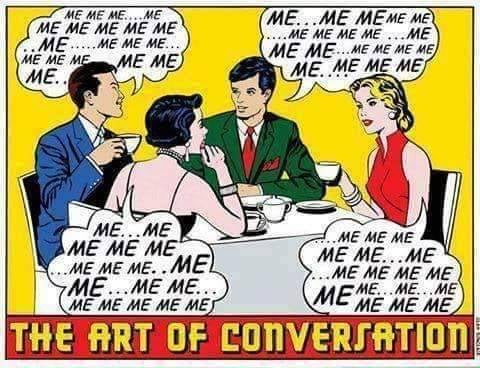
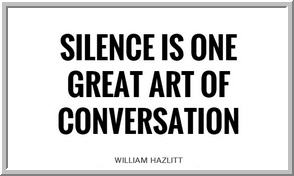

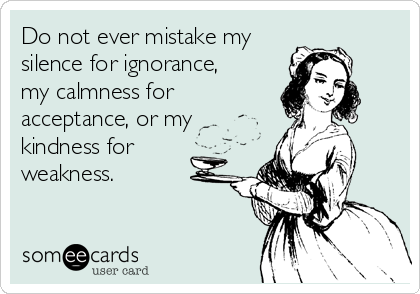
 Start
Start 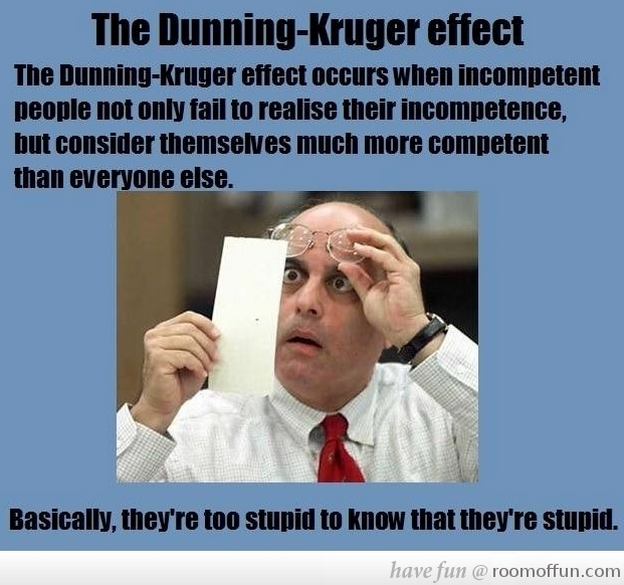
 Cognition and Perception:
Cognition and Perception: